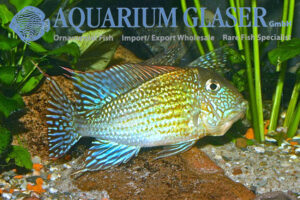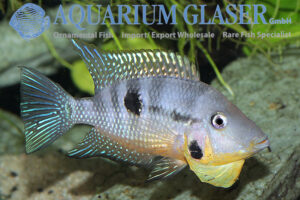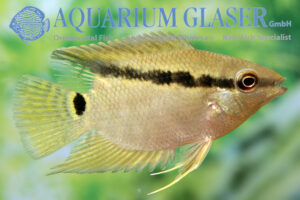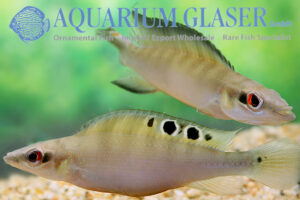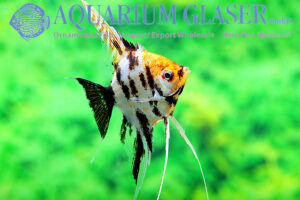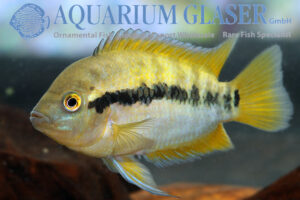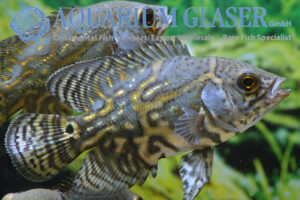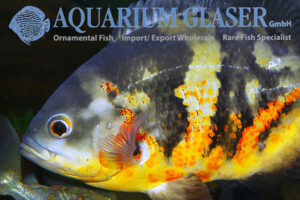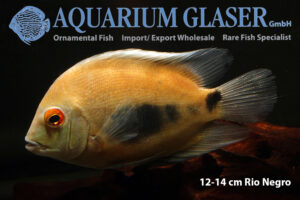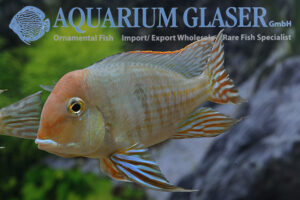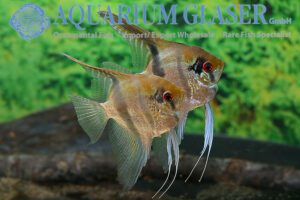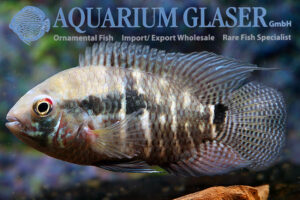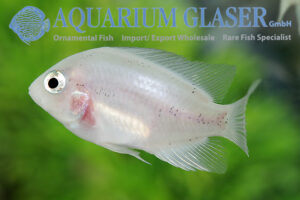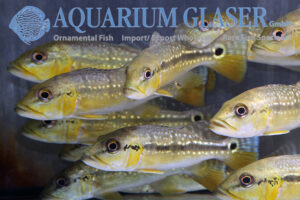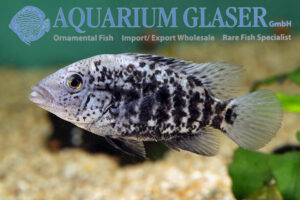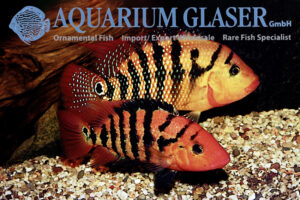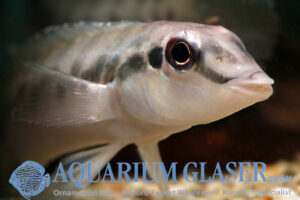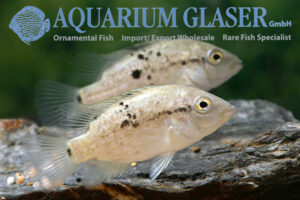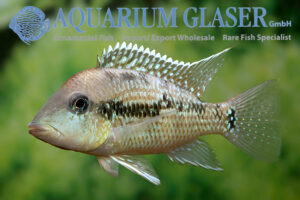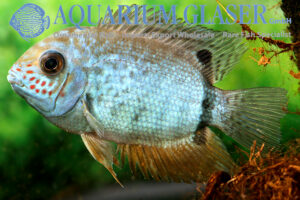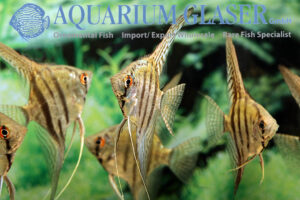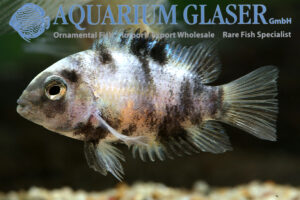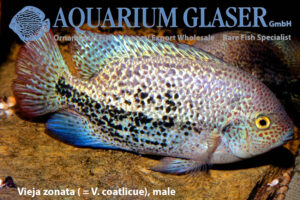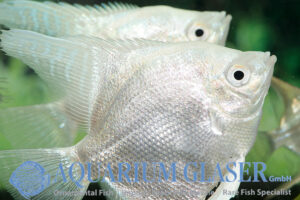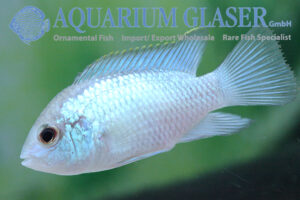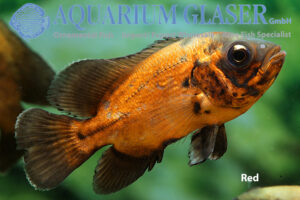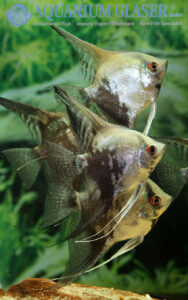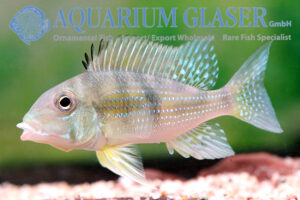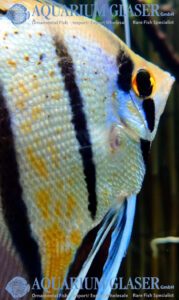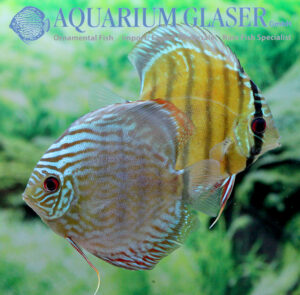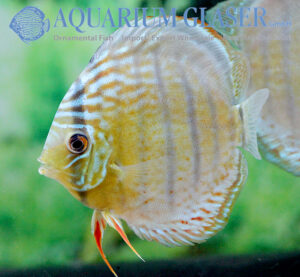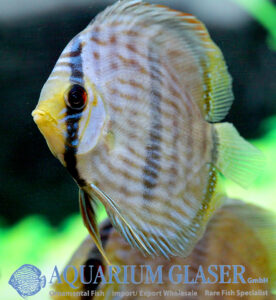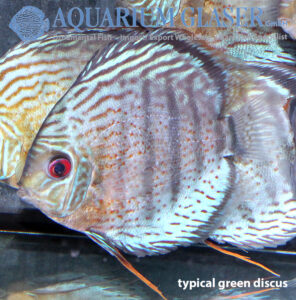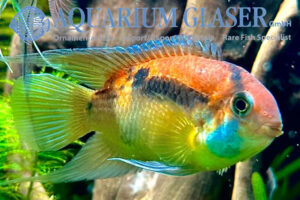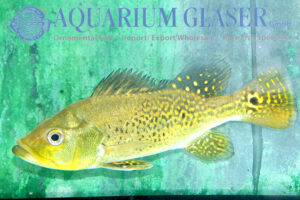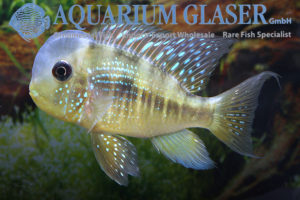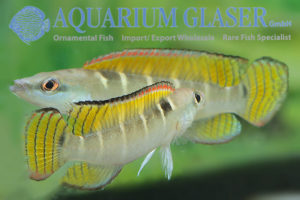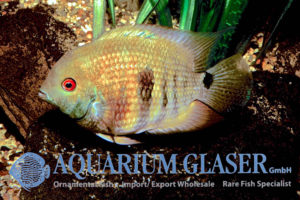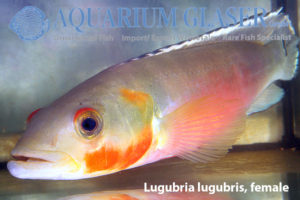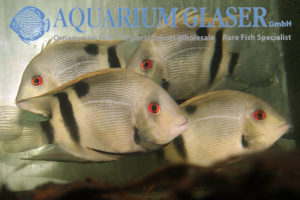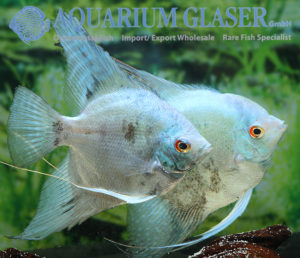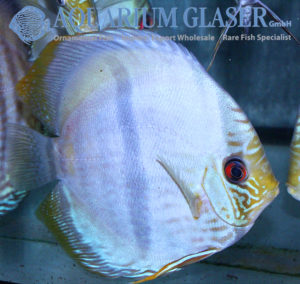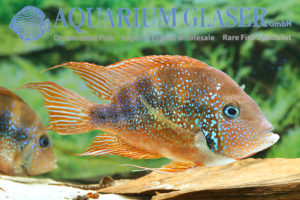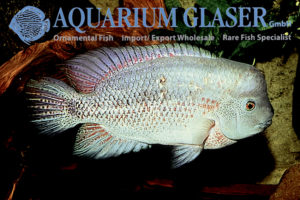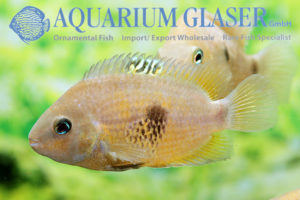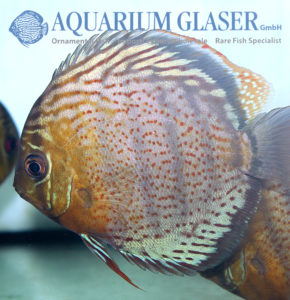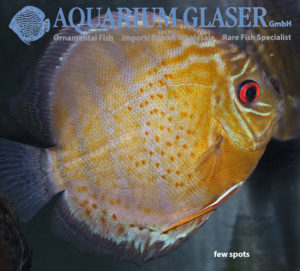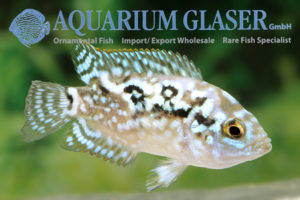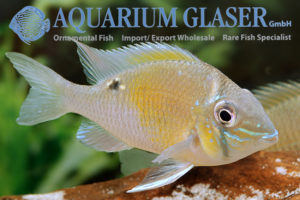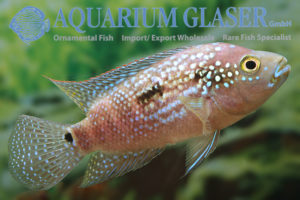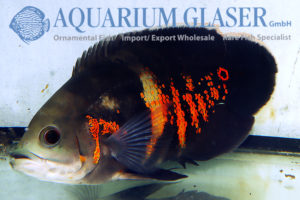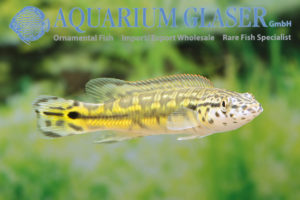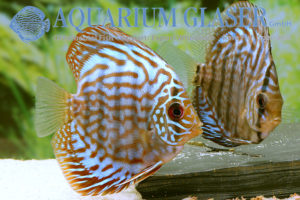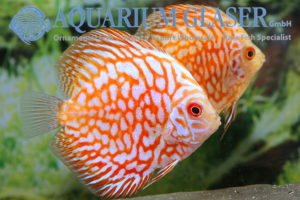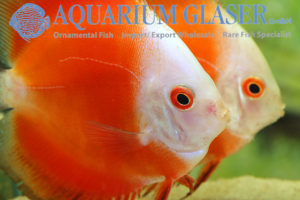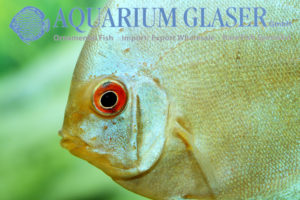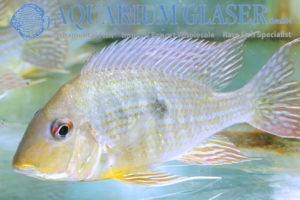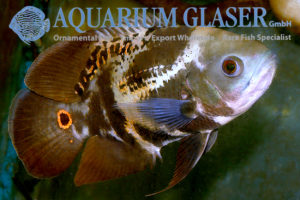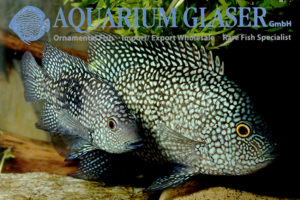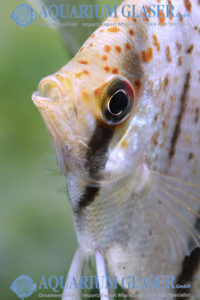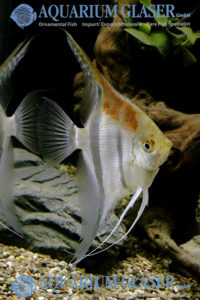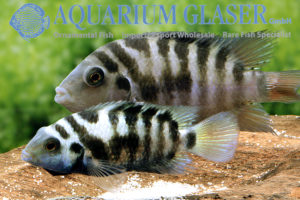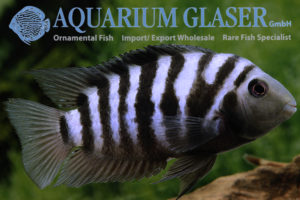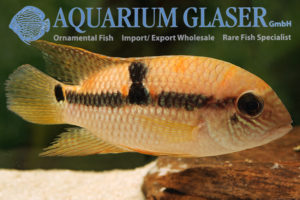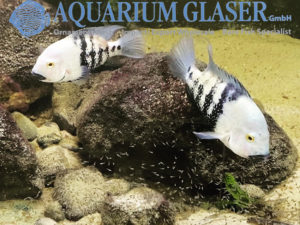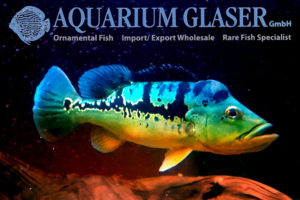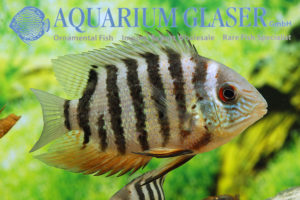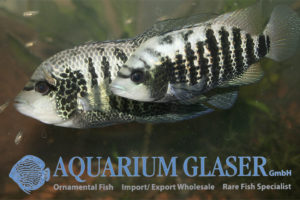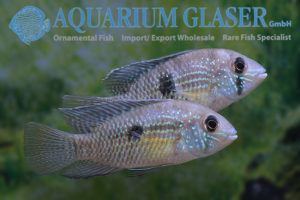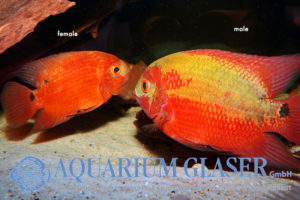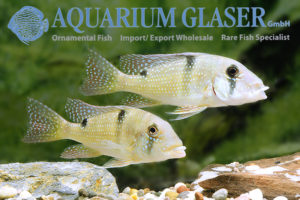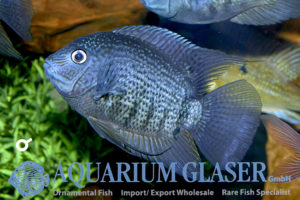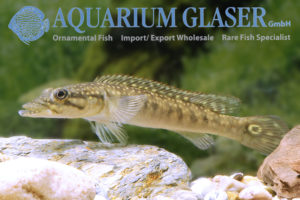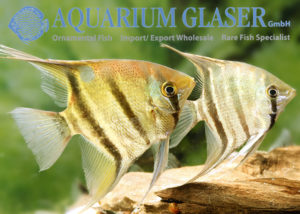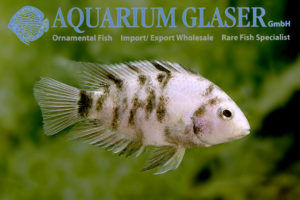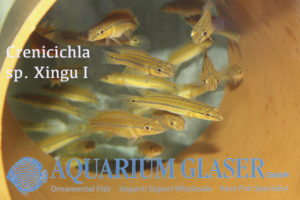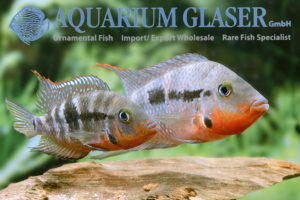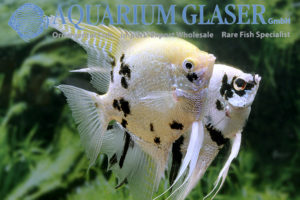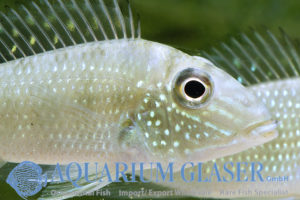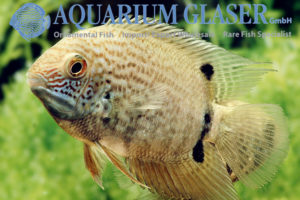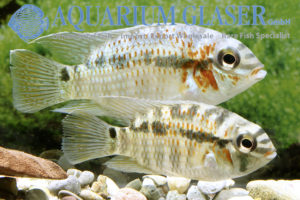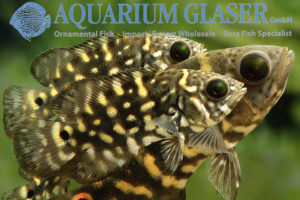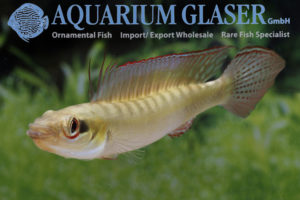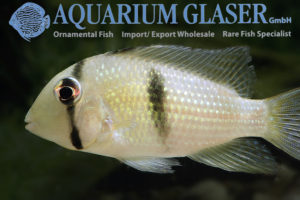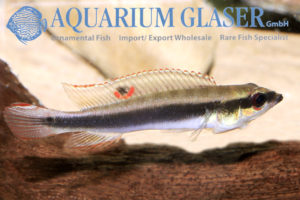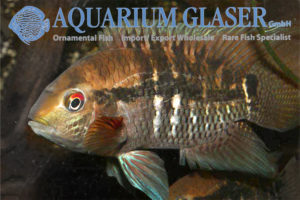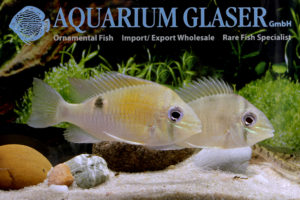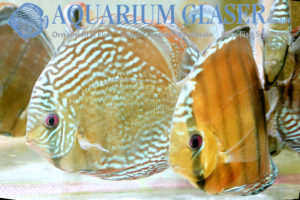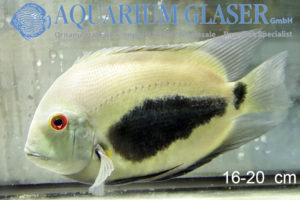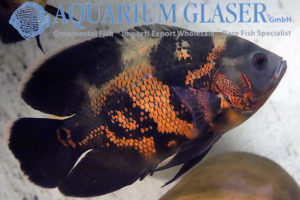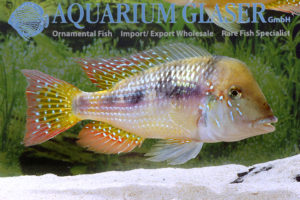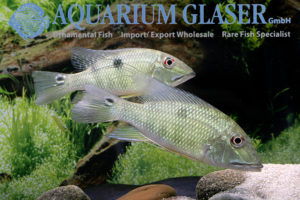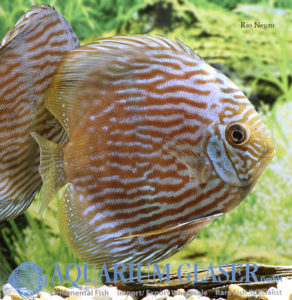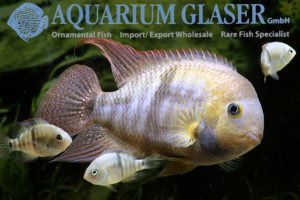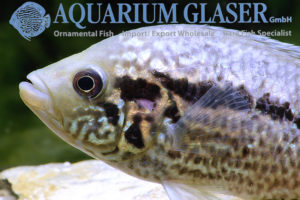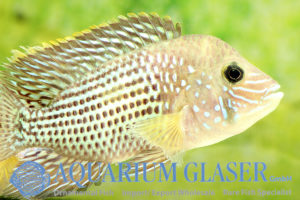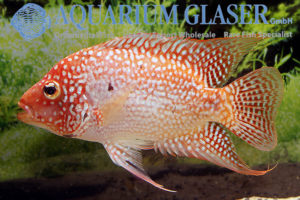All Geophagus species are beautiful, but some are more beautiful than others. Since 2009, aquarists have known of a beautiful earth eater that only occurs in the Rio Aripuanã catchment in Brazil. Accordingly, the species was initially referred to as Geophagus sp. “Aripuana”. In January 2015, the beautiful species was scientifically described for the first […]
25e. Perchlike fishes (5): Remaining Cichlids from South and Central America (293)
-
-
Thorichthys affinis
“The unexpected often happens” says the well-known proverb. That’s what happened to us with Thorichthys affinis. Some time ago we received juveniles of – according to the breeder – Thorichthys meeki, the firemouth cichlid. The 3-4 cm long juveniles didn’t have much to offer in terms of color, but they were extremely harmonious in terms […]
-
Mesonauta egregius
The flag cichlids (Mesonauta) are beautiful and peaceful, medium-sized cichlids that reach a length of 12-15 cm. In the wild they usually live together with angelfish (Pterophyllum), which they also resemble in terms of behavior and general requirements in the aquarium. As with the angelfish, the sexes are indistinguishable in younger animals. In older specimens, […]
-
Wallaciia regani (formerly: Crenicichla regani) Tapajós
Cichlids are referred to as dwarf cichlids if their total length – including the caudal fin – does not exceed 10 cm. As many cichlids grow considerably larger and then also have corresponding space requirements in terms of housing, dwarf cichlids are particularly popular in the aquarium hobby. All pike cichlids of the genus Wallaciia […]
-
Pterophyllum Angelfish Red Head Marble
In the majority of cases, the aim of breeding forms is to develop a type that is as uniformly colored and physically developed as possible. In other words: ideally, all animals of a particular breeding line should look the same. This is not the case with the marbled angel and the red-headed marbled angel developed […]
-
Herotilapia multispinosa
This medium-sized cichlid – males can grow to a maximum length of 12 cm, females always remain 3-5 cm smaller – originally comes from Central America (Nicaragua, Costa Rica, Honduras). It is a real classic among aquarium fish and was at its peak popularity in the 1970s. Although the name “rainbow cichlid” given to them […]
-
Astronotus mikoljii
Of the seven scientifically described species of Astronotus, only two are currently recognized by most ichthyologists, namely A. crassipinnis and A. ocellatus; however, a third, A. zebra, is so distinctly different in color from the others that there is little doubt as to its validity. Now a new name has been established: the Oscar from […]
-
Astronotus rubroocellatus Rio Negro
The scientific assessment of the various species within the genus Astronotus varies greatly, with most scientists only accepting three species, namely A. crassipinnis, A. ocellatus and A. mikoljii, which was only described in 2022. Others believe that there are many more species and that the genus urgently needs a scientific revision. The species compressus (Peru, […]
-
Uaru amphiacanthoides
The triangle cichlids (Uaru) are a small genus of cichlids in terms of the number of species, with only two scientifically accepted species: U. amphiacanthoides from the Amazon basin and upper Orinoco (Brazil and Colombia) and U. fernandezyepezi from the Rio Atabapo (Venezuela). Both species reach a total length of 20-30 cm and are therefore […]
-
Geophagus pyrocephalus ( = Tapajós Red Head)
Since the end of the 1980s, a beautifully colored Geophagus from the closer relationship of G. altifrons and G. surinamensis has been known, which differs from almost all other Geophagus species by an orange or red forehead. This characteristic affects both sexes from the onset of sexual maturity, which is the case at around 8-10 […]
-
Pterophyllum “Rio Nanay Type3”
The systematics of the angelfish (Pterophyllum) is poorly understood. Only three species are generally recognized, namely P. altum, P. leopoldi and P. scalare, but there are undoubtedly many more. The “field-forest-and-meadow” scalar of the aquarium hobby in its countless breeding forms is a hybrid for which it makes no sense to give it a scientific […]
-
Cichlasoma pusillum
Cichlids identified as Aequidens portalegrensis have been kept and bred in the aquarium since 1913. The German common name was “Streifenbuntbarsch” ( = striped cichlid) because the fish can show numerous vertical stripes in the rear half of the body. As there is a very nice photo by Paul Unger from the 1930s of a […]
-
Vieja fenestrata White & Marbled
The Central American large cichlids of the genus Vieja (synonym: Paratheraps) were, like so many others, previously classified as Cichlasoma. In the 1980s and 1990s, these fish enjoyed relatively great popularity among cichlid enthusiasts who traveled to their Central American habitats and brought back many new findings (and a few little fish). The species Vieja […]
-
Cichla mirianae FOGO
The Peacock basses of the genus Cichla are among the most popular food fish in South America. The animals grow large (30-60 cm, some even up to 100 cm) and have firm, tasty meat with few bones. They are also highly sought after as game fish and anglers travel long distances to catch certain tucunaré […]
-
Nandopsis haitiensis (2)
A few weeks ago we introduced you to the cichlid Nandopsis haitiensis, which is very rarely on sale. Unfortunately, we were only able to illustrate this post with pictures of the somewhat inconspicuously colored juveniles (https://www.aquariumglaser.de/en/fisharchive/nandopsis-haitiensis-2/). However, we have set a few animals aside and they have now developed so well that they are already […]
-
Mesoheros festae (formerly: Cichlasoma festae)
The magnificent, large (males up to 35 cm, females up to 30 cm) tiger cichlid (Mesoheros festae) used to be a fairly frequent guest in the aquarium. Together with Andinoacara rivulatus (formerly: Aequidens rivulatus), it was one of the top exports from the Pacific side of Ecuador. M. festae was called “Red Terror”, A. rivulatus […]
-
Teleocichla preta
The cichlids of the genus Teleocichla are very closely related to Crenicichla. They remain relatively small, the T. preta discussed here is one of the largest species with a maximum length of 15 cm. The swim bladder is greatly reduced in Teleocichla. Without active swimming movements, they cannot stay afloat. Ecologically, the Teleocichla could be […]
-
Nandopsis haitiensis
Although the current classification of the cichlids from Central America, formerly grouped together under Cichlasoma, has been around for a few years now, many genus names have been slow to catch on in the hobby. The main reason for this is, of course, that the large cichlids of Central America are currently only kept and […]
-
Geophagus sp. Alto Sinu
In 2016, French aquarists in Colombia discovered a new eartheater, which they named after the place where it was found in the Rio Cauca inlet – a Rio Sinu. However, this Rio Sinu is not identical to the much larger Rio Sinu of the same name in Colombia! For the exact locality see the article […]
-
Heros sp. Turquoise Lago Juá
The genus Heros is in urgent need of scientific revision. The current five generally recognized species only represent a small part of the populations now known. It is often almost impossible to choose a reliable species name, which is why in many cases it is now simply omitted. They are called Heros sp. and an […]
-
Pterophyllum “Zebra”
We do not know exactly when and where the zebra scalar was bred. In his monograph on angelfish, completed in 1977 but not printed until 1979, Paepke states that he was unable to find any sources. At this time, there were already several breeding lines of the zebra scalar, whose characteristic breed feature is the […]
-
Amatitlania (formerly Cichlasoma) nigrofasciata Marble
The Convict cichlid Amatitlania (formerly Cichlasoma) nigrofasciata is no longer a novelty: it has been kept and bred in aquaria since 1939. The first aquarium specimens of this fish, which is widely distributed in Central America, came from Lakes Atitlan and Amatitlan in Guatemala. The genus to which the greenfin cichlid currently belongs was named […]
-
Vieja zonata
We mistakenly received a Central American cichlid species from South East Asia under the name “Cichlasoma cyanoguttata”. After the 5-6 cm long fish had swum in a little, we went about identifying them and came to the conclusion that they were probably a Vieja species, most likely V. zonata. In such cases, however, it is […]
-
Pterophyllum “Platinum”
White animals exert a special attraction on many people. In myths and fairy tales, it is often white individuals of a wild animal species that have magical properties. This explains why white rabbits, white pigeons, white mice etc. also have a special status among pets, and ornamental fish are no exception. The loss of color […]
-
Andinoacara pulcher “Neon Blue”
Exactly 10 years ago, a new star appeared in the ornamental fish sky. A beautiful sky-blue (to stay in the picture) cichlid conquered the world. It was first offered to us in February 2014 under the name “Nannacara Neon Blue” from Singapore. However, it was clear from the outset that it was not a representative […]
-
Astronotus Red, Albino Red and Red Chili
Oscars (Astronotus) are naturally very variable in color. In addition to wild-colored animals, cultivated forms have also enjoyed great popularity for decades. Why is the Oscar called Oscar? To be honest, we don’t really know. But it is certain that the name originated in the USA. In 1936, an article by E. W. Clarke on […]
-
Pterophyllum “California”
The freshwater angelfish (Pterophyllum) is one of the most popular ornamental fish of all. The species name Pterophyllum scalare is usually chosen for the cultivated forms, although this does not describe the situation correctly from a scientific point of view. The cultivated forms, which were mainly created in the 1940s to 1960s, are partly based […]
-
Geophagus taeniopareius
In 1981, the first report appeared on a Geophagus species imported as by-catch, which the author, Rainer Stawikowski, initially referred to as the “Yellow Cheek-Stripe Eartheater“. The relatively slender species is very much out of the usual range of Geophagus, both physically and in terms of brood care behavior. Nevertheless, it took until 1992 for […]
-
Pterophyllum sp. “Rio Nanay” bred
Like so many cichlids, angelfish also develop different-looking forms within their large distribution area. Whether these forms are classified as independent species, as subspecies or as color variants is ultimately a matter of taste and a philosophical issue. There are also individual differences within each population; in the case of the angelfish of the Rio […]
-
Discus Special (3): Brown/blue Discus
Small wild-caught fish Discus cichlids, like all cichlids, only develop their full coloration when they are largely mature (i.e. approx. 15 cm long in the case of discus). This is generally known and one of the reasons for the popularity of Asian color breeds, as they already show their full color at lengths of 7-9 […]
-
Discus Special (2): Discus Green 7-9 cm
Small wild-caught fish Discus cichlids, like all cichlids, only develop their full coloration when they are largely mature (i.e. approx. 15 cm long in the case of discus). This is generally known and one of the reasons for the popularity of Asian color breeds, as they already show their full color at lengths of 7-9 […]
-
Discus Special (1): Discus Heckel Rio Negro 7-9 cm
Small wild-caught fish Discus cichlids, like all cichlids, only develop their full coloration when they are largely mature (i.e. approx. 15 cm long in the case of discus). This is generally known and one of the reasons for the popularity of Asian color breeds, as they already show their full color at lengths of 7-9 […]
-
The scientific species name of discus cichlids: an open question
The question of which scientific species names should be given to the various discus cichlids is a controversial one. There is agreement that all Symphysodon populations are relatively closely related to each other and that preserved specimens cannot be identified with certainty without color and location; the only exception is the Heckel discus (Symphysodon discus), […]
-
Cleithracara maronii KOUROU
The Keyhole cichlid (Cleithracara maronii, formerly Aequidens maronii) is a well-known aquarium fish that has only rarely been imported to Europe as a wild catch since its first import in 1936. The demand is covered by captive breeding. Although the species has no striking colors – the very varied pattern consists of brown, grey, beige […]
-
Cichla kelberi “Spider”
Just a few decades ago, the Peacock Basses from South America (genus: Cichla) were considered almost unsustainable for aquaria, but nowadays they are bred regularly and in large numbers. The latest craze is Cichla kelberi “Spider”, a breeding form whose origin is not yet known. The photos show our current stock, 16-18 cm long specimens, […]
-
Gymnogeophagus balzanii
The hump of the male of G. balzanii is comparable to the feather tail of a peacock: it is simply the expression of manhood! The Paraguay Eartheater originates from the southern parts of South America and is imported now and then from Paraguay as wild collected stock, but the species is also bred on a […]
-
Wallaciia compressiceps (= Crenicichla c.).
The dwarf spezies among the pike cichlids have recently been separated as an independent genus Wallaciia (see https://www.aquariumglaser.de/en/fish-archives/the-crenicichla-have-been-reclassified/). They include W. compressiceps, which occurs only in the Tocantins and Araguaia rivers in Brazil. It is one of the smallest, the prettiest and the most aggressive pike cichlid species. Although it only grows to a maximum […]
-
Heroina isonycterina
It does not always have to be bright colors that make a fish interesting. Rather, it appeals to nature lovers to study the life history of the animals they keep and this often leaves a deeper impression in the long run than the colorful appearance. By cichlid standards Heroina isonyterina is a gray mouse. However, […]
-
The Crenicichla have been reclassified
With 93 accepted species, the pike cichlids (Crenicichla) are the most species-rich genus of cichlids anywhere. Closely related to Crenicichla are the Teleocichla cichlids. The relationship is so close that the independence of Teleocichla has been doubted several times. In a recent study in which 74 species of the complex could be considered (65 Crenicichla […]
-
Uaru fernandezyepezi
In the Rio Atabapo in Venezuela, from which Uaru fernandezyepezi originates, it is already some weeks closed season, i.e. no fish may be caught there. The beautiful Uaru fernandezyepezi, which we can offer at the moment, are therefore the last specimens of the current season. There was a time when people hardly dared to import […]
-
Pterophyllum Blue Angelfish 2023
Solid blue-green angelfish are apparently the dream of many angelfish breeders. The body base color blue, a mutation, has been known in angelfish since World War 2, but it was very difficult to establish it in large-scale breeding. It was not until the end of the 1990s that this was achieved. Since then, a wide […]
-
Symphysodon discus “BLUE MOON”.
The Real or Heckel Discus (Symphysodon discus) is always somewhat behind its close relatives, the Blue and Green Discus, in popularity. This is certainly only because it breeds less willingly. There is no doubt about its special beauty. The Heckel Discus “Blue Moon” is found only in a rather remote region of the Alto Nhamunda […]
-
Thorichthys aureus
The “golden cichlid” is one of the first cichlid species that became known for aquaristics. It originates from Mexico. Already in 1911 the first imports took place. However, the species never really caught on in general, in contrast to its cousin T. meeki, which was first imported more than 20 years later and is still […]
-
Vieja breidohri
The 1980s and 1990s were the high times of traveling aquarists who wanted to shed light on Central American cichlids. And this succeeded more than satisfactorily! One of these amateur researchers in the best sense of the word was Hans-Günther Breidohr (1938-2017). In his honor Uwe Werner and Rainer Stawikowski named a cichlid Paratheraps breidohri, […]
-
Cryptoheros myrnae “Rio Sarapiqui”.
Central American cichlids often require large aquariums. Not so much because of their swimming needs, but because they form territories and are often unbearably aggressive in aquariums that are too small. In large aquariums, on the other hand, this is hardly a problem. But there are also dwarf cichlids among the Central Americans, which – […]
-
Symphysodon aequifasciatus “Royal Green Tefé”.
The kings of the discus fishes are the “Royal” varieties. A discus is called Royal if green or blue pattern elements are spread over the entire body surface. Among the green discus the Royal from Tefé in Brazil (which is also one of the type localities of S. aequifasciatus, i.e. the locality from which the […]
-
Symphysodon wild Nanay Green
The Rio Nanay is a large, left-bank tributary of the upper Amazon River. It is considered a blackwater river. The Rio Nanay is home to Green Discus, which have always been sought after in the hobby. In the past, in the 1950s and 1960s, these precious animals came to us via the Colombian city of […]
-
Blue Dempsey Cichlids
The Blue Dempsey is a beautiful blue variant of the normally rather dark colored Rocio octofasciata (formerly: Cichlasoma or Nandopsis octofasciatum). In the youth Blue Dempsey still have relatively many black color parts, the extremely intensive, then almost solid blue coloration develops only with increasing age. Presumably the animals are descendants of a mutant, which […]
-
Biotodoma cupido Peru
The small cichlid Biotodoma cupido – it reaches about 12-15 cm total length, but is already sexually mature at 6-8 cm – is probably the most widespread cichlid species in Amazonia. Among experts there is cheerful disagreement whether all the different looking animals are only local color variants or independent species. Be that as it […]
-
Rocio octofasciata
The beautiful cichlid Rocio octofasciata from Mexico is still known by many older people as Cichlasoma biocellatum. But all over the world young and old know him also under the popular name “Jack Dempsey”, although you have to be quite old to have experienced this legendary heavyweight boxer still in his active time: Jack Dempsey’s […]
-
Astronotus sp. NEW ZEBRA/Tapajos
We have received an incredibly beautiful pair of wild caught Oscars from the Rio Tapajos. At least the male absolutely competes with the breeding form “Red Tiger Oskar” in color, but as we said, they are wild-caught! The sexes are difficult to distinguish externally in Astronotus, but the striking color difference and the expression of […]
-
Crenicichla sp. Tapajos I / Cobra Pike
The Rio Tapajós in Brazil is a more than 800 km long tributary of the Amazon. It is also the largest tributary of the Amazon River and flows to its right side when viewed downstream. It is not surprising that the great Tapajós River contains numerous endemic species, i.e. species that only occur there and […]
-
Symphysodon “Super Red Turqoise”.
The Red Turquoise lines were among the first breeding forms of the Discus Cichlid, developed in the 1980s. Aquaristics had reached the point where wild-caught Brown/Blue Discus could be considered “cracked”. So one mastered their successful acclimation and breeding. Since wild-caught discus turn out very inconsistently – between simply brown and completely blue streaked animals […]
-
Symphysodon “Pidgeon Blood Panda”
The “Pidgeon Blood” discus, which appeared in the early 1990s as a mutation in Asian discus breeding, revolutionized discus breeding. It combined two characteristics that discus breeders had previously only dreamed of: an early coloration, i.e. already 5-7 cm long juveniles look essentially like adult fish in terms of color. And a second advantage of […]
-
Symphysodon “Marlboro Red”
The color red is the dream color of many animal breeders. Red canaries, red swordtails, red guppies, red angelfish – wherever this was genetically possible, it was realized. With polychromatic fish species, e.g. with Apistogramma, where in nature always several color variants occur together, the red ones were preferred in breeding. And with the discus? […]
-
Symphysodon “Blue Diamond“
The Asian discus cultivars enjoy great popularity, because on the one hand they color very early (wild forms all look similarly unspectacular in 5-7 cm length) and on the other hand they are not very shy, so they can be presented well even in unfamiliar surroundings. Of the solid blue discus, the Blue Diamond, which […]
-
Geophagus sp. “Caqueta”
From the Colombian province of Caquetá we occasionally receive a magnificent Geophagus of the surinamensis group, which is obviously a scientifically not yet described species. Three color characteristics are used for the identification of Geophagus of this complex relationship: 1. the shape, position and size of the lateral spot in relation to the eye, 2. […]
-
Astronotus mikoljii
Of the seven scientifically described species of Astronotus, only two are currently recognized by most ichthyologists, namely A. crassipinnis and A. ocellatus; however, a third, A. zebra, is so distinctly different in color from the others that there is little doubt as to its validity. Now a new name has been established: the Oscar from […]
-
Herichthys carpinte
The Texas cichlid was successfully introduced to Germany and bred as early as 1902. In the meantime the species has undergone several name changes. In former times it was called Cichlasoma cyanoguttatum, today it is placed in the genus Herichthys and it is believed that the large spotted form as we can offer it right […]
-
Pterophyllum sp. “Guyana Red Dragon”.
Similar to the fact that there are several red-backed angelfish populations, there are also several red or yellow-spotted wild forms. The ancestors of Pterophyllum sp. “Guyana Red Dragon” came from the Essequibo River in Guyana. Number and intensity of dots vary individually in each fish, but all specimens we currently received (they are now 5-7 […]
-
Pterophyllum “Manacapuru redback”.
There is a lot of interest in special wild forms of the angelfish. Among the best known is the “Manacapuru Redback”, a very striking form. Because of the strong need for revision of the genus Pterophyllum, it is better not to call it “Pterophyllum scalare” scientifically, because what exactly this “real” scalare is has yet […]
-
Amatitlania siquia (= sp. Honduras Redpoint)
The taxonomic status of this small cichlid, which has had quite a respectable aquaristic career as Amatitlania sp. Honduras Redpoint, is controversial. It is currently assumed that it belongs to the species scientifically described as A. siquia. Now this species is itself controversial and is seen by some scientists as a synonym to the old […]
-
Amatitlania nigrofasciata
Are you in a phase of the hobby, in which nothing at all wants to work out concerning breeding? Then it is time for the emergency rescuer in all situations, the convict cichlid Amatitlania nigrofasciata. Although it is no longer available everywhere and at any time, especially in its natural form, it hardly ever disappoints […]
-
Aequidens superomaculatum
For the first time we were able to import a beautiful Aequidens from Venezuela, which is probably Ae. superomaculatum. This species has been described scientifically only a few years ago – in 2015. Unique in the genus and also giving the name (superomaculatum = with a spot above) is the combination of a continuous lateral […]
-
Astatheros macracanthus (formerly: Cichlasoma m.)
There is no doubt that Astatheros macracanthus is a fish for connoisseurs. This 20-25 cm long cichlid is distributed quite widely from southern North America to Guatemala and El Salvador. The species was scientifically described already in 1864, but in the aquarium it has always remained an absolute rarity. The reason is clear: in the […]
-
Cichla ocellaris x melaniae Hybrid
Few fish show as clearly how dynamic things can get in aquaristics as Cichla. These large cichlids are among the most popular food fish in South America, but until the turn of the millennium they were not considered very suitable for aquarium care: they were considered too large and too sensitive. In the meantime, however, […]
-
Heros sp. Curare Bred
For the first time we could import this magnificent Heros from Venezuela in 2016. The animals should originate from a Rio Curare, therefore the name; however, no Rio Curare is known to us. We suspect the Rio Ventuari as origin. The fish are extremely colorful, otherwise everything speaks for the fact that it concerns the […]
-
Mayaheros beani (formerly: Cichlasoma b.)
Origin: Rio San Christobal = Laguna El Camalote, San Blas, Nayarit, Mexico The small town of San Blas, where the Rio San Christobal empties into the Pacific Ocean, is considered the northernmost place with a tropical climate on the Pacific coast of Mexico. The name Laguna El Camalote was originally applied to a marshland southeast […]
-
Andinoacara latifrons Rio Atrato
This beautiful cichlid has been swimming in the world’s aquariums since 1906 and has been delighting for generations with its varied behavior and beautiful looking brood care. The animals are typical open breeders with parent family, i.e. both parents lead the numerous brood. Confusion gave in the course of time due naming. For a long […]
-
Hypselecara temporalis OYAPOC
The Emerald cichlid has become a bit out of fashion. This is a quite sad thing, for this impressive large cichlid – males can become up to 30 cm long, females always stay much smaller – is one of the most beautiful species of cichlid of South America. Once more we can offer now German […]
-
Geophagus harreri
In very small numbers we have received this beautiful Geophagus as German offspring. The species reaches a maximum length of 20-25 cm and is exclusively found in the inlet of the Marowijne River, the border river between French Guyana and Suriname. One of the tributaries of the Marowijne is the Maroni River, known to cichlid […]
-
Heros sp. Madeira
The Rio Madeira is a right tributary of the Amazon River and is considered the largest tributary in the world. Its origin is in Bolivia where it is formed from the confluence of the Rio Beni and the Rio Marmoré. It flows into the Amazon in Brazil at Itacoatiara. The Rio Madeira is a white […]
-
Crenicichla jegui
The pike cichlids (Crenicichla) are with 94 accepted species (and there are still a large number of undescribed ones) the most species-rich genus of cichlids at all. One of the most distinctly different species is Crenicichla jegui from the Rio Tocantins drainage. There the fish lives very hidden and was therefore discovered only when the […]
-
Pterophyllum leopoldi (“dumerilii”)
This season we received especially attractive Pterophyllum leopoldi from Brazil. Unfortunately, the animals do not like the photo tank at all and show there only a fraction of the wonderful colors – a magnificent green shimmer all over the body and a very nice red tone in the back – that well acclimated animals of […]
-
Amatitlania (formerly Cichlasoma) nigrofasciata Marble
The convict cichlid Amatitlania (formerly Cichlasoma) nigrofasciata is really not a novelty anymore: it has been kept and bred in aquariums since 1939. The first aquarium animals of this very widely distributed fish in Central America came from the lakes Atitlan and Amatitlan in Guatemala. The genus to which the convict cichlid currently belongs was […]
-
Crenicichla from the Rio Xingu
In the 1990s, when the large river cichlids of Brazil experienced a certain boom, also four Crenicichla species came to Europe for the first time, which were named Crenicichla sp. Xingu I – IV due to the lack of availability of a scientific name. All four grow quite large by ornamental fish standards, you have […]
-
Thorichthys meeki “Rio Candelaria”
The Rio Candelaria is a lowland river in Central America. It originates in northern Guatemala and flows through regions there and in southeastern Mexico whose jungle landscapes were almost untouched by man for a long time. The Rio Candelaria gained sad fame because the conquistador Hernán Cortez had the last Aztec ruler Cuautémoc, a fierce […]
-
Angelfish XL
Fully grown angelfish of the various breeding forms are comparatively rare in the trade. The reasons are obvious: The breeding is time and space consuming, because they are still cichlids, which demand a certain individual space for themselves. That’s why XL angels have to be comparatively expensive. But occasionally such animals are in demand and […]
-
Satanoperca sp. aff. jurupari “Tapajos”
Some of the earth-eaters of the genus Satanoperca have frightening names (Satanoperca = devil-perch, Jurupari = devil, Daemon = demon, Lilith = the bride of the devil), but there are only few cichlids that are as peaceful and harmless as they are. The most important thing they need in an aquarium is a part of […]
-
Heros sp. Manacapuru
Manacapuru is the third largest city in the state of Amazonas in Brazil. It is located about 80 km west of Manaus at the confluence of the Rio Manacapuru and the Amazon. A large, lake-like extension of the Rio Manacapuru near the city is called Lago Cabaliana. From the surroundings of Manacapuru, especially the red-backed […]
-
Krobia xinguensis
Only in 2012 this pretty cichlid was scientifically described, before that it was known in the hobby as Krobia sp. “Xingu Red Head”. As the name suggests, the animal originally comes from the Rio Xingu in Brazil. However, the species is only available as bred ones. This beautiful Aequidens relative is the ideal cichlid for […]
-
Astronotus cf. crassipinnis “Bumble Bee”
Currently we import very pretty young Oscars from Brazil, which are offered under the name “Astronotus crassipinnis”. The species A. crassipinnis exists in Brazil, but there is no possibility to check if the species identification is correct. We suspect that the animals are bred ones. The beautiful fish show the typical behaviour of all Astronotus […]
-
Crenicichla notophthalmus
The genus Crenicichla is with about 100 species one of the most species-rich cichlid genera at all, and yet there are numerous forms that, if we see them alive, do not really want to fit the described species. On the other hand, there are also described species of which we already doubted about their existence, […]
-
Guianacara dacrya
The genus Guianacara currently comprises seven described species, all of which originate from the Guiana shield in South America. The genus was only established in 1989 and only one species – G. geayi – was known before; Pellegrin described it in 1909. From this one can already conclude that the species look quite similar. Before […]
-
Crenicichla sp. “regani-Orinoco”
The pike cichlids (Crenicichla) are one of the most species-rich cichlid genera with 94 valid species at present. Many species grow to well over 20 cm in length and thus belong to the large cichlids, but there are also dwarf cichlids. The latter include the beautiful, slender C. regani, which according to literature should grow […]
-
Cichlasoma boliviense
In the past, the genus Cichlasoma included practically all the larger Central and South American cichlids, more than 200 species; currently there are only 16 species in the genus, all were cultivated and valued in the early days of aquarium science as Aequidens portalegrense. It is rarely possible to distinguish the 16 scientifically described Cichlasoma […]
-
Biotodoma cupido Peru
The small cichlid Biotodoma cupido – the species can attain a maximum length of about 12-15 cm, but is sexually mature already at 6-8 cm total length – is probably the species of cichlid with the widest distribution in Amazonia. However, experts are merrily discordant wether all the different looking populations represent only varieties of […]
-
Discus Rosé Lake Tureré
The approximately 300 km long Nhamundá River, one of the smaller left hand tributaries of the Amazon, forms the border between the Brazilian states of Amazonas and Pará. Near the mouth of the Nhamundá River into the Amazon lies the city of Nhamundá. The estuary is basically a large lake district. One of these estuary […]
-
Uaru amphiacanthoides WILD
Within the genus Uaru only two species are scientifically distinguished at present: U. amphiacanthoides and U. fernandezyepezi. However, there are different local variants of U. amphiacanthoides, which differ in the size and position of the lateral spot. Right now we can offer wonderful, large and three-quarter sized wild catches from the Rio Negro in Brazil. […]
-
Astronotus ocellatus Oscars 12-15 cm Mixed Colour
Why the Oscar is called the Oscar? Honestly, we don’t know that for sure. But what is certain is that the name originated in the USA. In 1936, an essay by E. W. Clarke about Astrontus appeared in the journal “The Aquarium”. In 1949 Gene Wolfsheimer reported in „The Aquarium Journal“ that the aquarists in […]
-
Gymnogeophagus caaguazuensis
We have received beautiful wild collectes animals of this larvophile maternal mouth-breeding cichlid from Paraguay (i.e. the female incubates the larvae in her mouth, while the animals spawn on stones etc. and take care for the eggs here like open-breeding cichlid until they hatch). With only scarcely 9 cm of standard length (with tail fin […]
-
Satanoperca lilith
This beautiful cichlid from Brazil is only very rarely imported. Currently we can offer some specimens in perfect size. Despite the frightening name o the fish Satanoperca lilith is a very peaceful and reserved species, it can be even a bit shy. Maximum length reported for the fish is around 20-25 cm, our specimens are […]
-
Symphysodon discus
The real or Heckel discus is maintained considerably more rarely in the aquarium than brown, blue or green discus and their sports and becomes as good as not at all bred. It is therefore only regularly available as a wild collected fish. At the moment we have some very nice, well-adjusted Heckel varieties in our […]
-
Amatitlania sajica
From the many Central American cichlids, that were grouped in the gigantic collective-genus Cichlasoma earlier, most species are cared for only by the experienced “old hares” among the aquarists, who don’t want any more a colorful community aquarium but prefer a preferably big aquarium with few, characterful fishes. The Central American cichlids are perfect for […]
-
“Cichlasoma” loisellei
In their Central American home countries, the predatory colorful cichlids, that are classified currently in the genus Parachromis – before this, they were placed in Cichlasoma or Nandopsis – are called “Guapotes“. That means “the big pretty ones”. And actually, these species, some of which can reach up to 50 cm in length, are very […]
-
Andinoacara rivulatus
Once colourful large cichlids were so popular that imports from Ecuador were organised mainly because of them. On the pacific side of the country live the “Green Terror”, so the then still Aequidens rivulatus named gold seam cichlids were called, and the “Red Terror”, then Cichlasoma festae, today Mesoheros festae. Both species become easily over […]
-
Red Texas Cichlid
You may wonder why the title does not contain a scientific name. The reason for this is that the fish we are presenting to you was born from a crossbreed and crossbreeds do not have their own scientific name in zoological naming (unlike in botanical naming). The Red Texas Cichlid, which we offer as B-grade, […]
Crenicichla zebrina
Crenicichla zebrina is one of the still extremely high-priced fishes, because the finding areas are located far away and it is very costly to transport live fishes healthy and lively from there to the export stations. The wonderful coloration makes the animals nevertheless desirable.
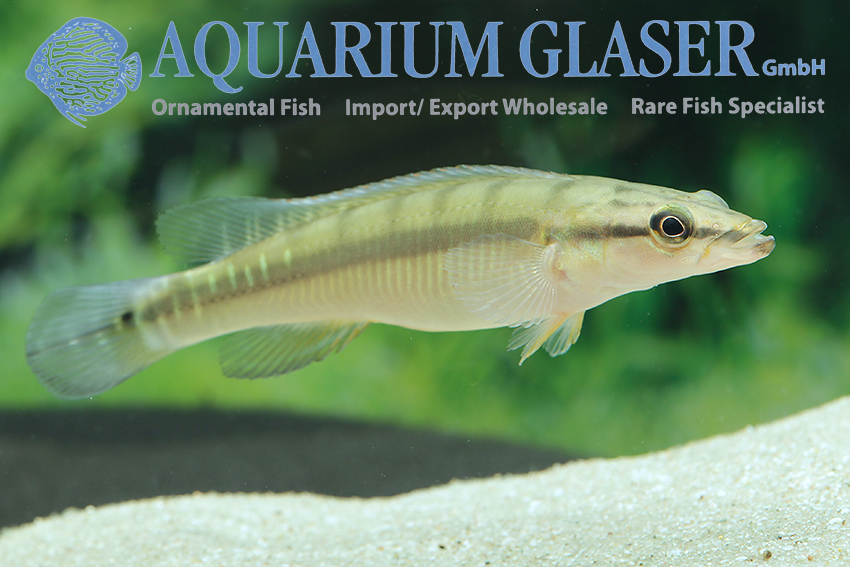
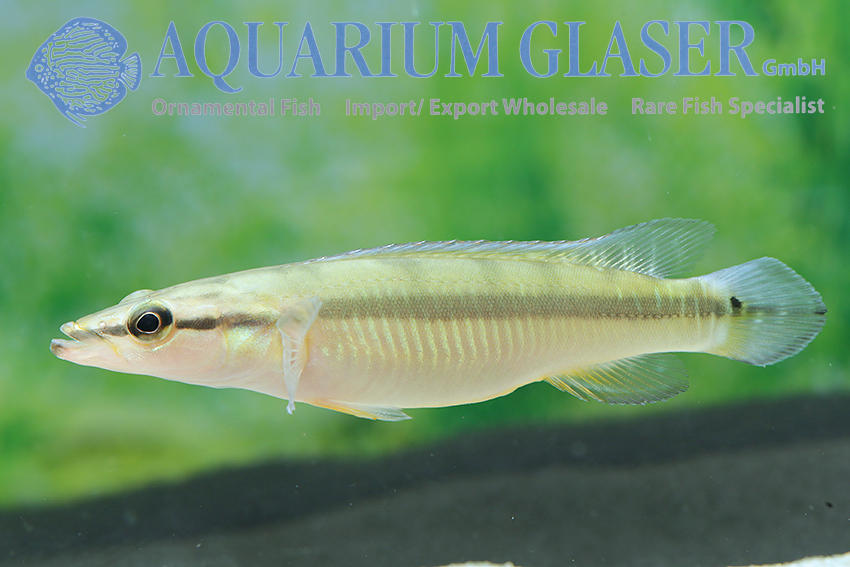
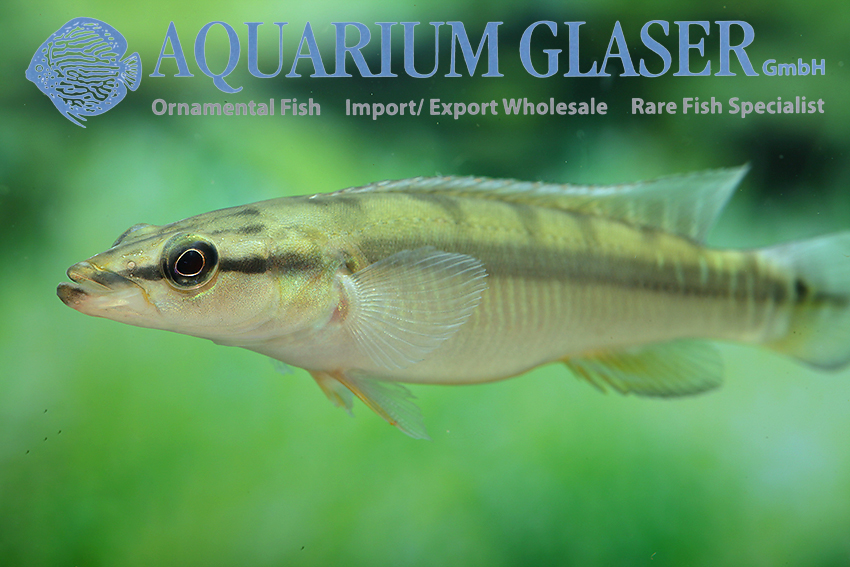
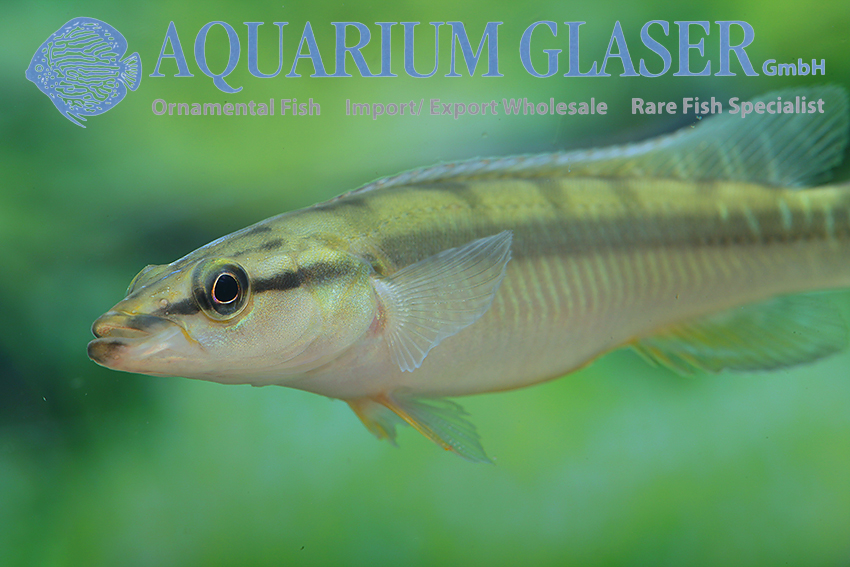
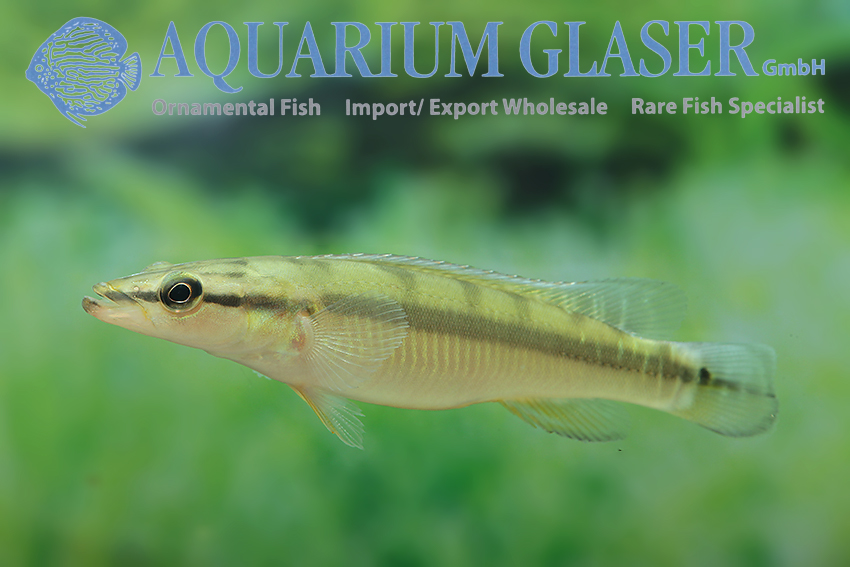
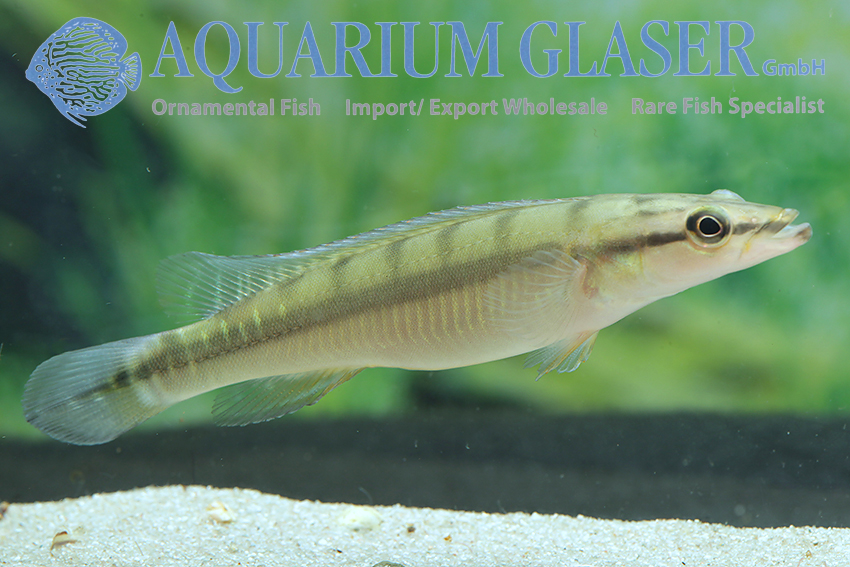
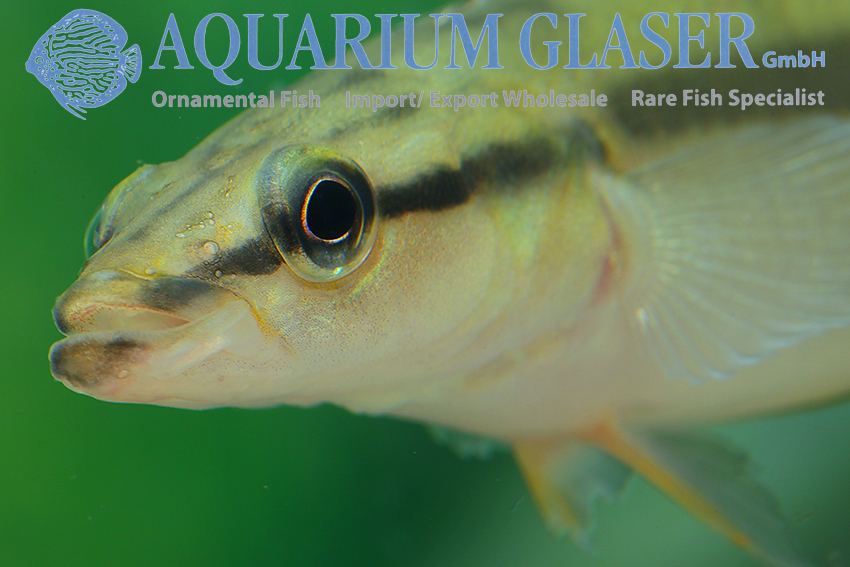
Unfortunately it is hard to tell the sexes of C. zebrina apart and furthermore randomly mated animals rarely get along. Juveniles, on the other hand, are inconspicuous in coloration and still expensive, but quite peaceful among themselves. A troop of young animals is the best chance to get to a breeding pair.
At the moment we can offer once again adult animals (for pictures see https://www.aquariumglaser.de/en/fish-archives/first_import_crenicichla_zebrina_arrived_en/ and https://www.aquariumglaser.de/en/fish-archives/crenicichla_zebrina_en-2/ and also youngsters (actual photos in this post and https://www.aquariumglaser.de/en/fish-archives/crenicichla_zebrina_en/).
For our customers: the animals have code 674051 (5-8 cm) and 674058 (24-28 cm) on our stocklist. Please note that we only supply wholesale.
Text & photos: Frank Schäfer
Scalare leopoldi Red Spots Peru
From Peru we received wonderful, large angels (Pterophyllum). They have a yellowish to reddish back and many brown-red spots on the flanks. This exceptionally beautiful wild form has been called Pterophyllum leopoldi for decades due to a misidentification in aquarium circles. The “true” P. leopoldi originates from Brazil and is the fish always referred to in the hobby as P. dumerilii, while the “true” P. dumerilii from Brazil is considered synonymous with P. scalare. Other names, equally incorrect, that circulate for Peru scalars are “Peru Altum” or “Pterophyllum peruensis”.
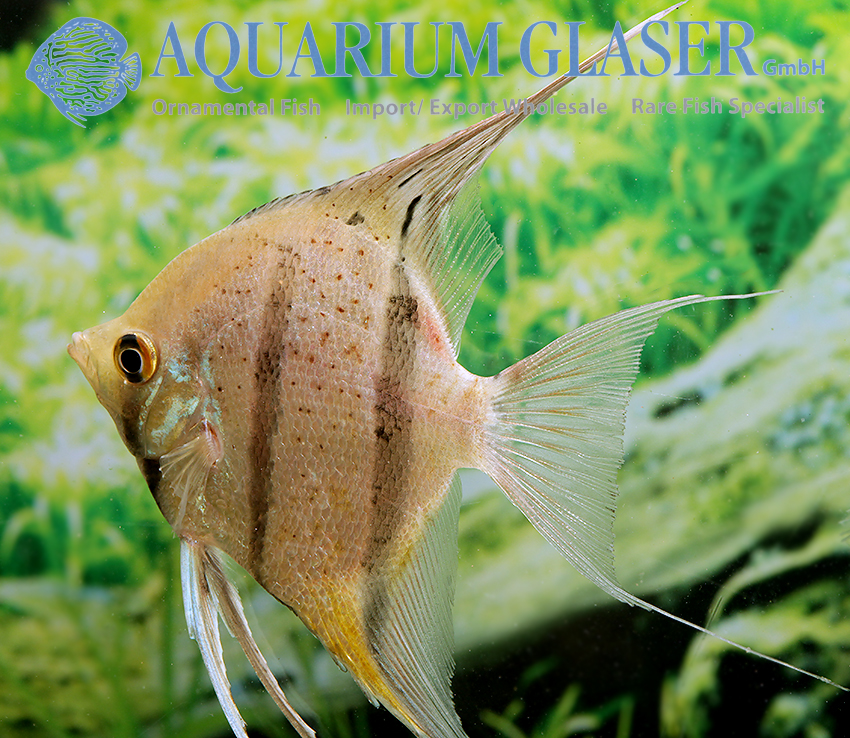
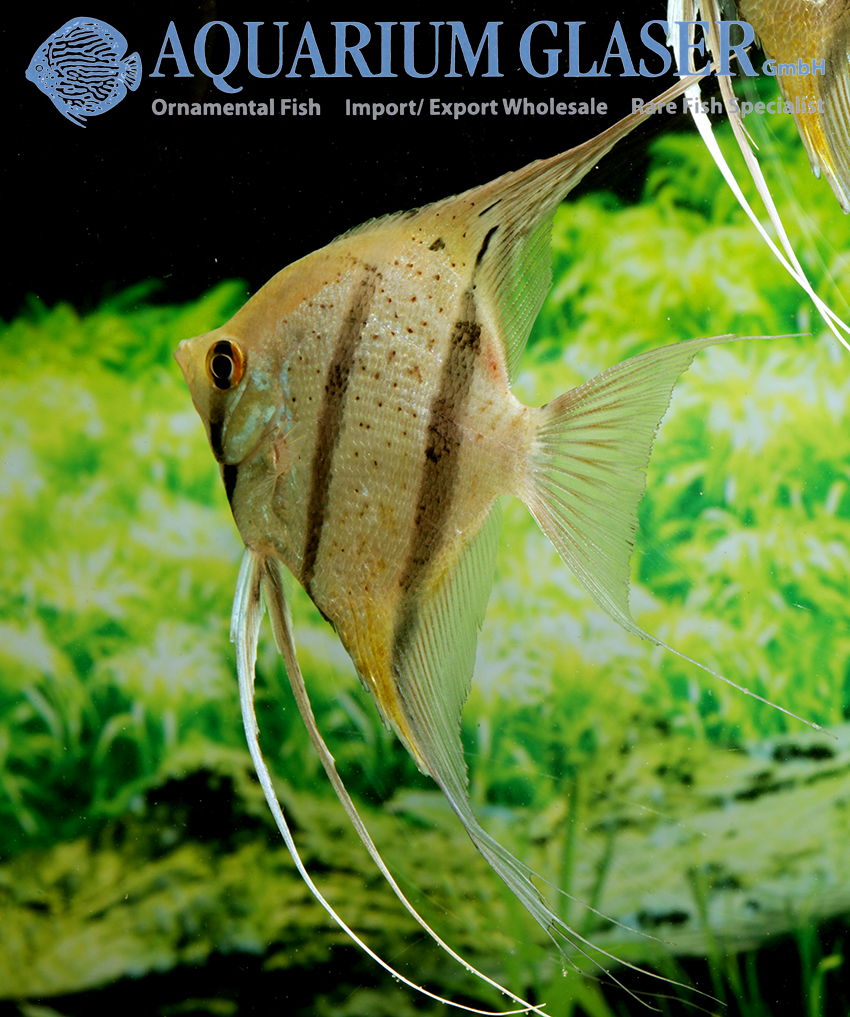
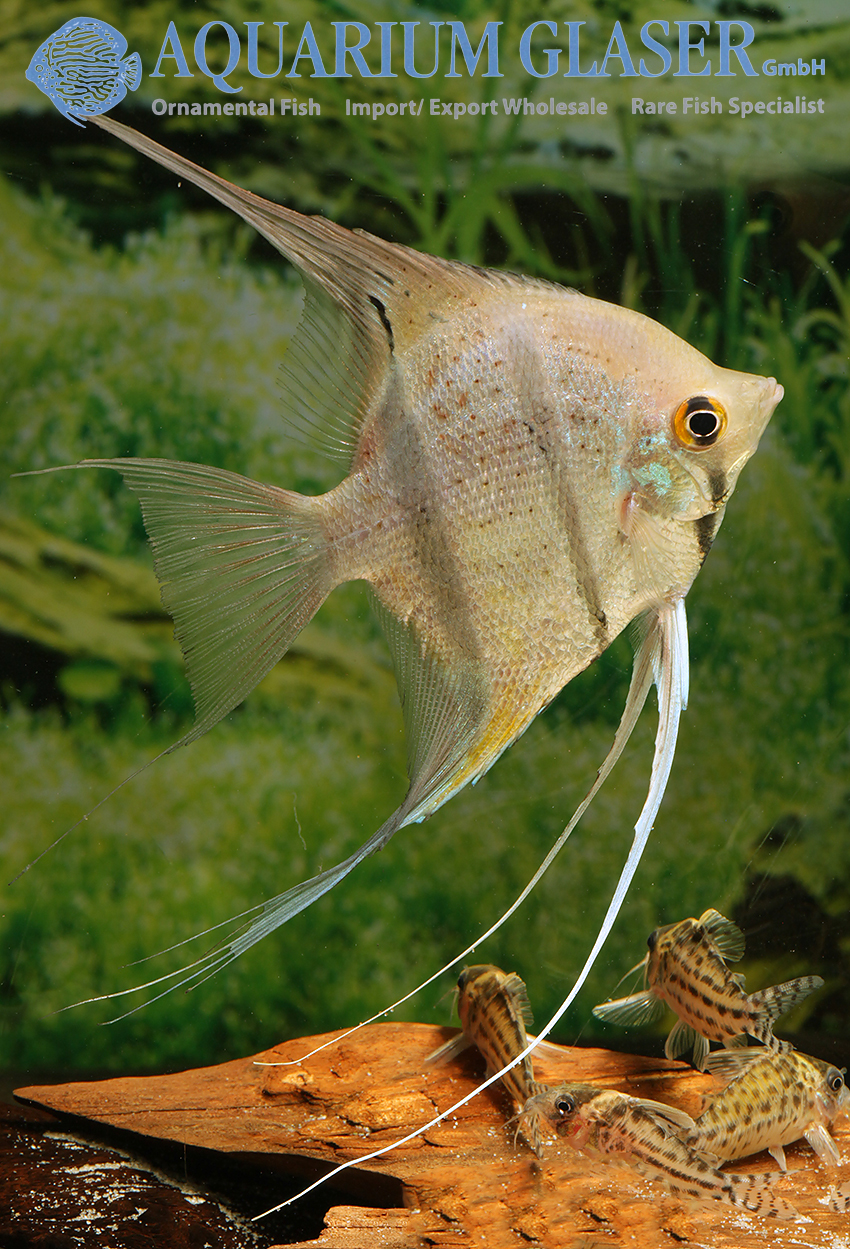
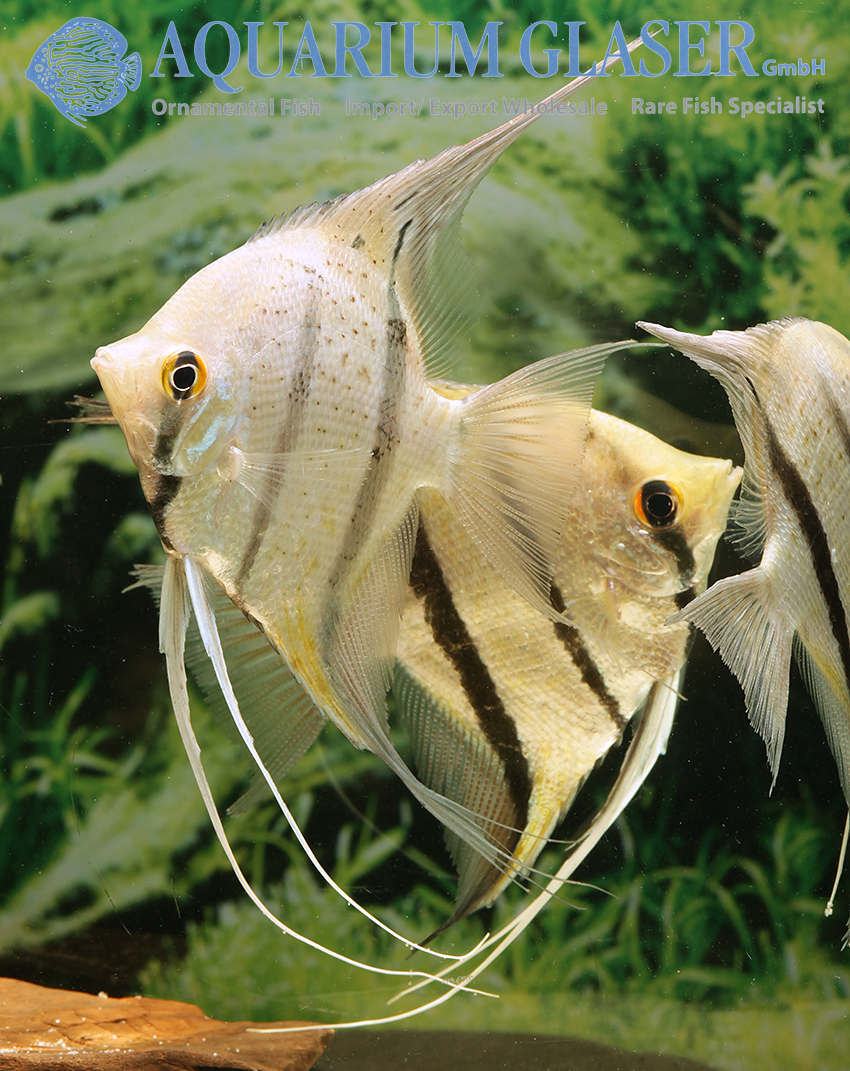
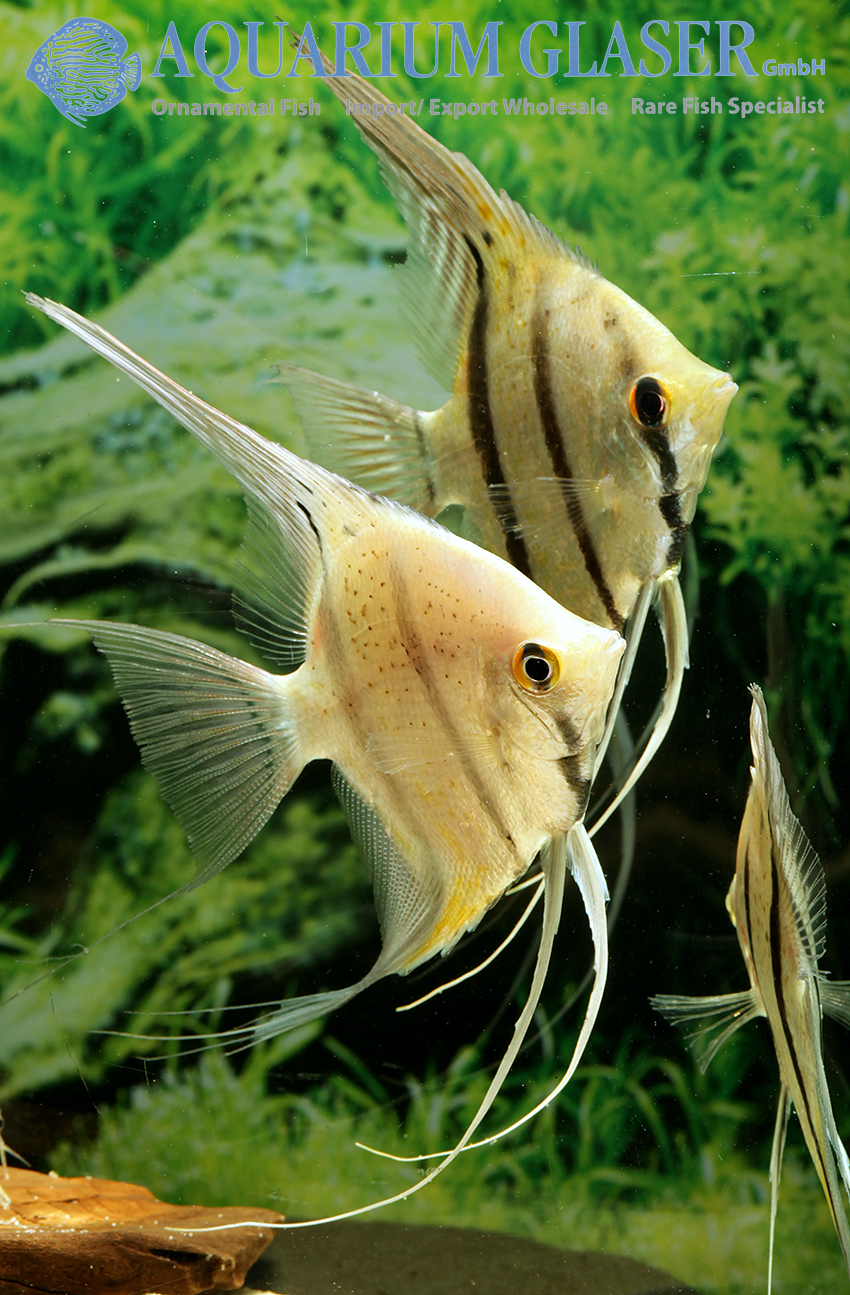
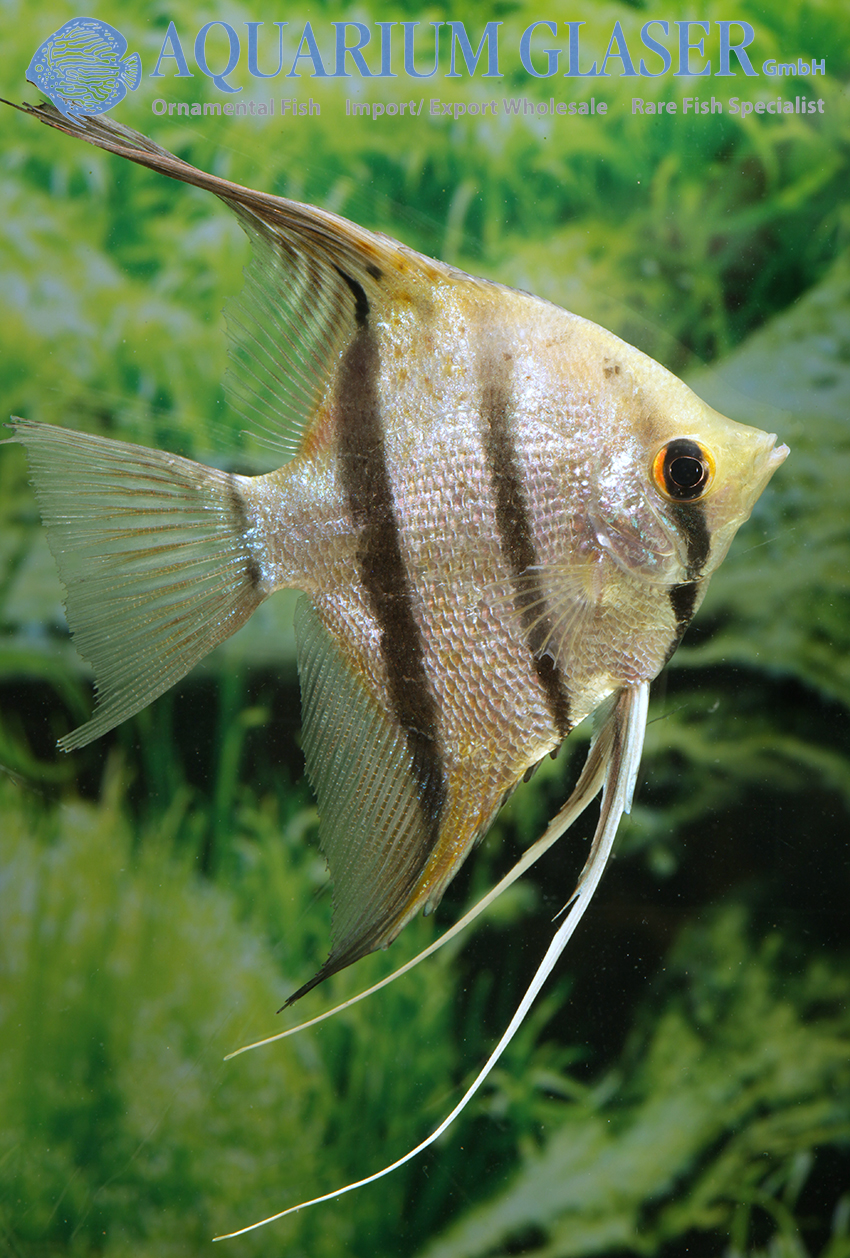

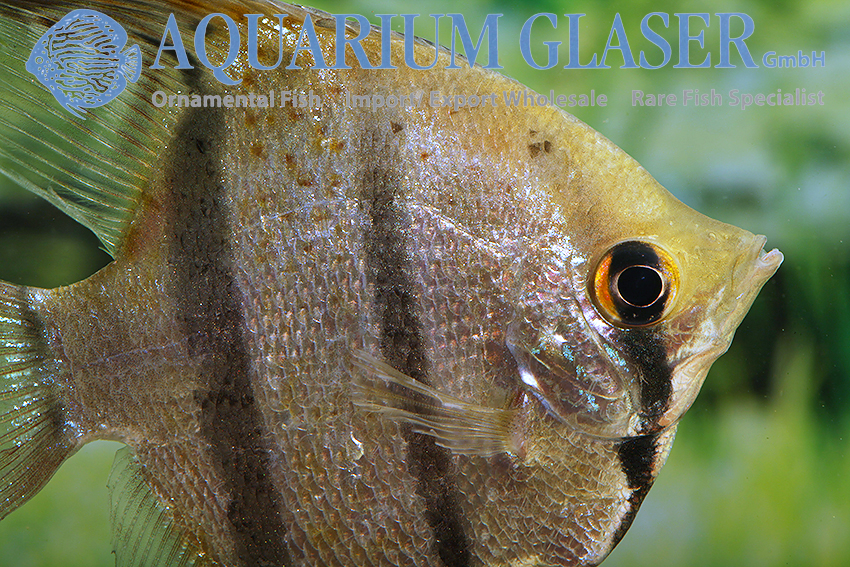
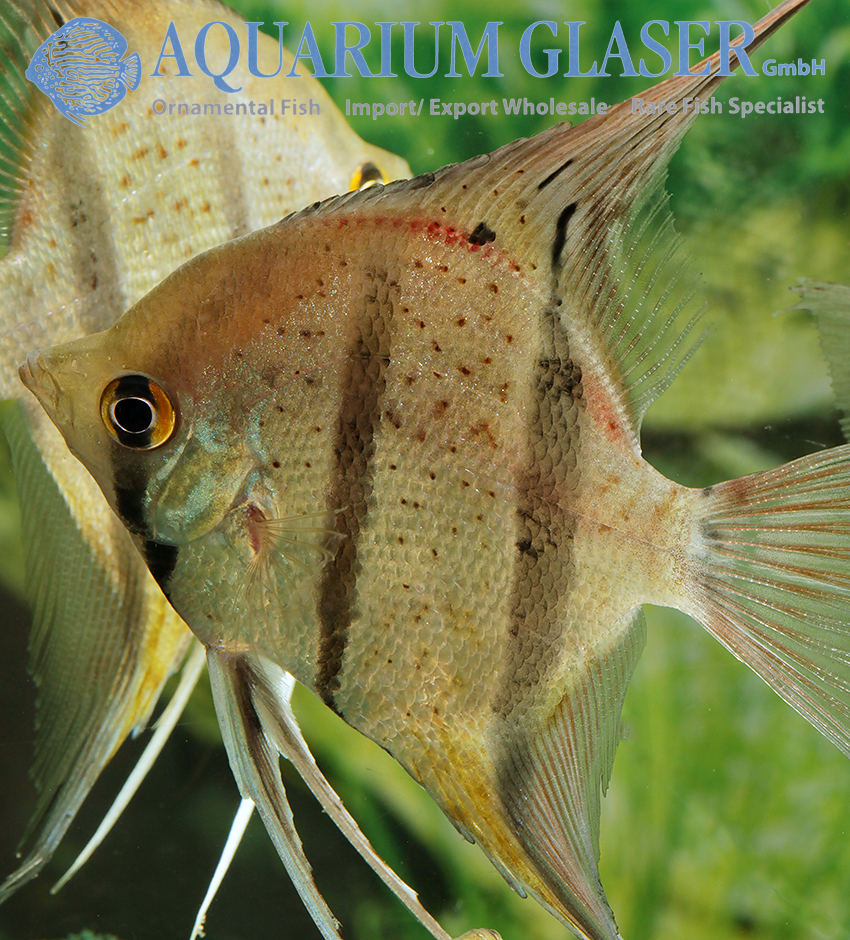
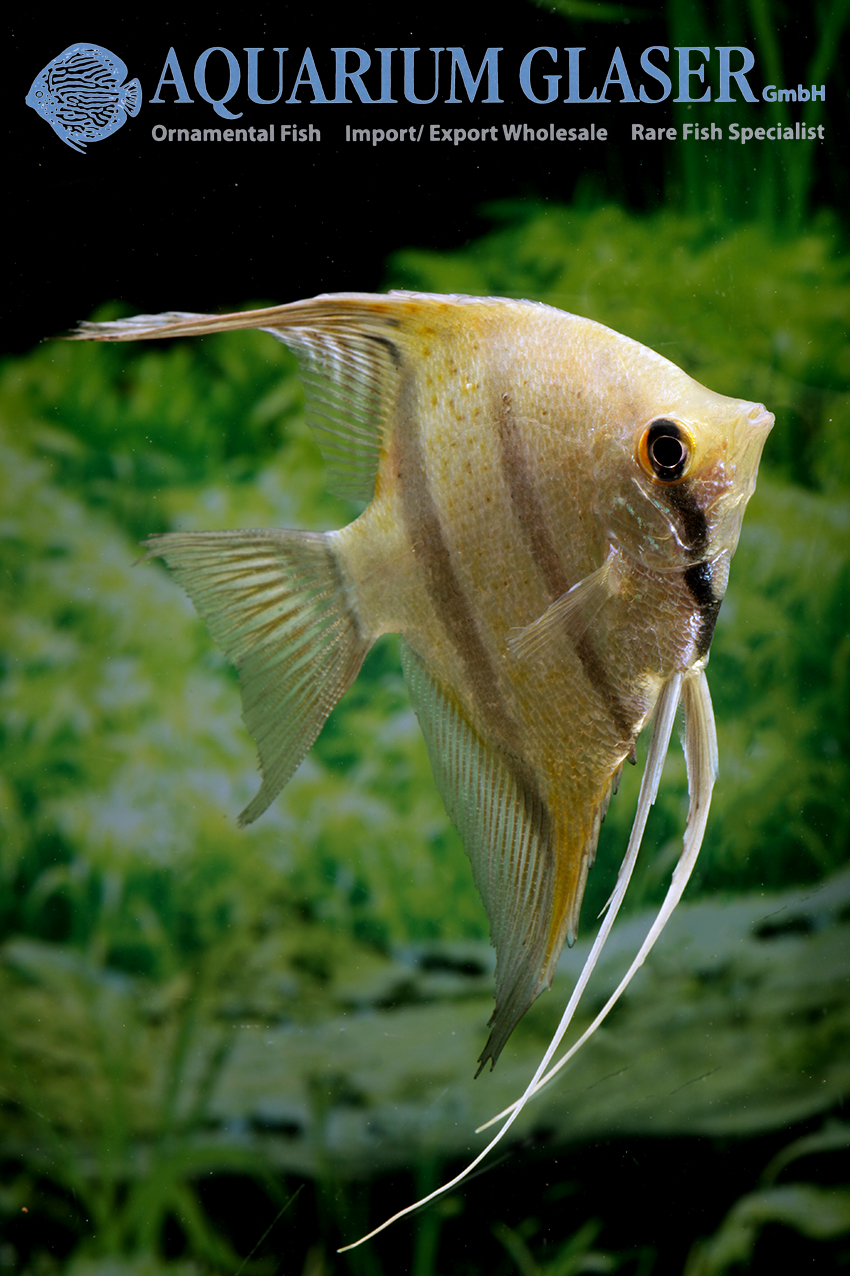
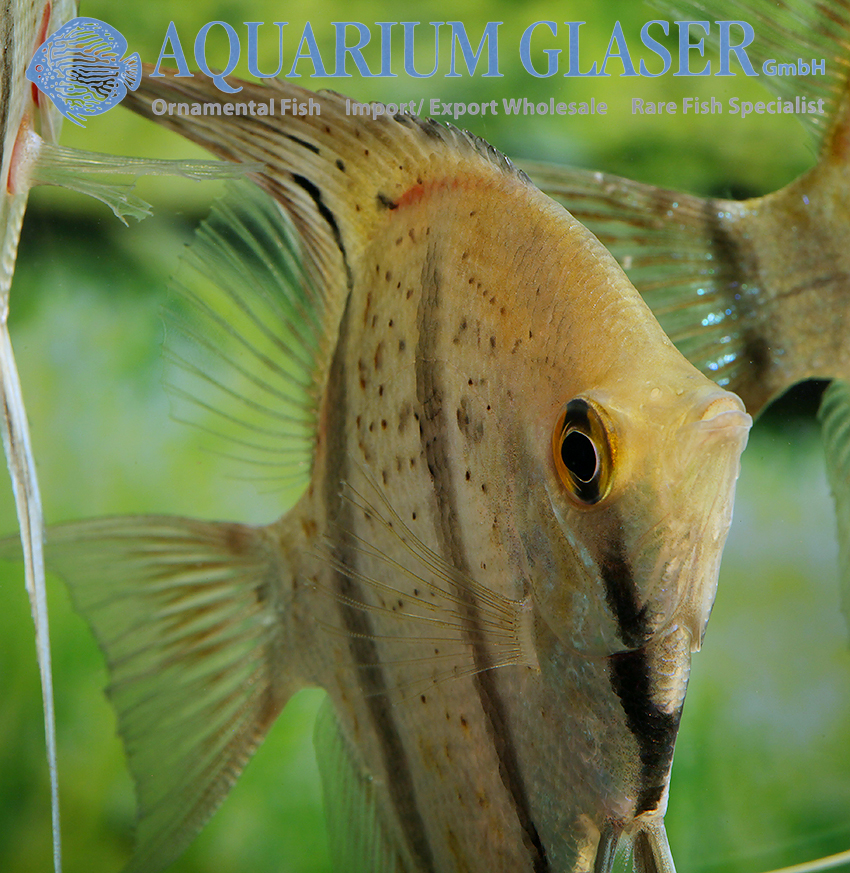
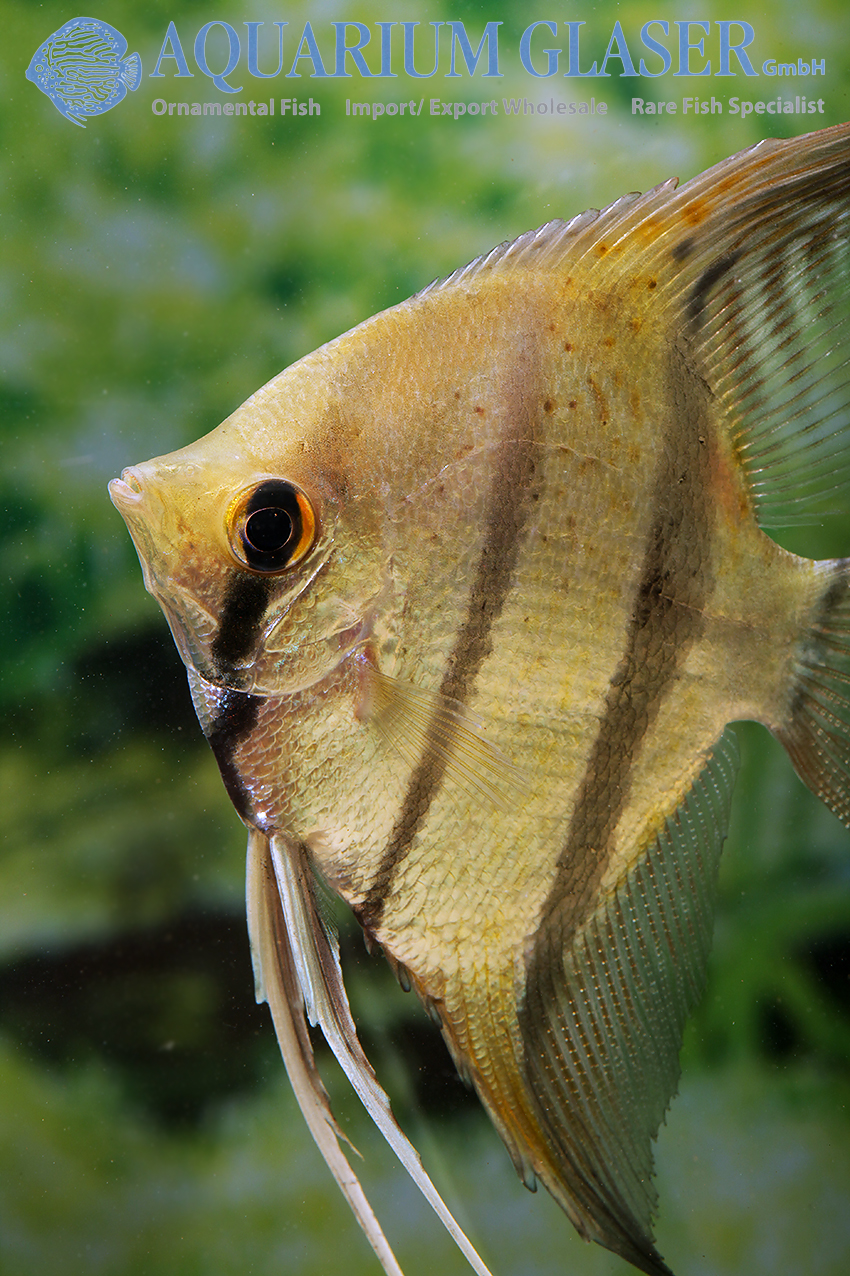
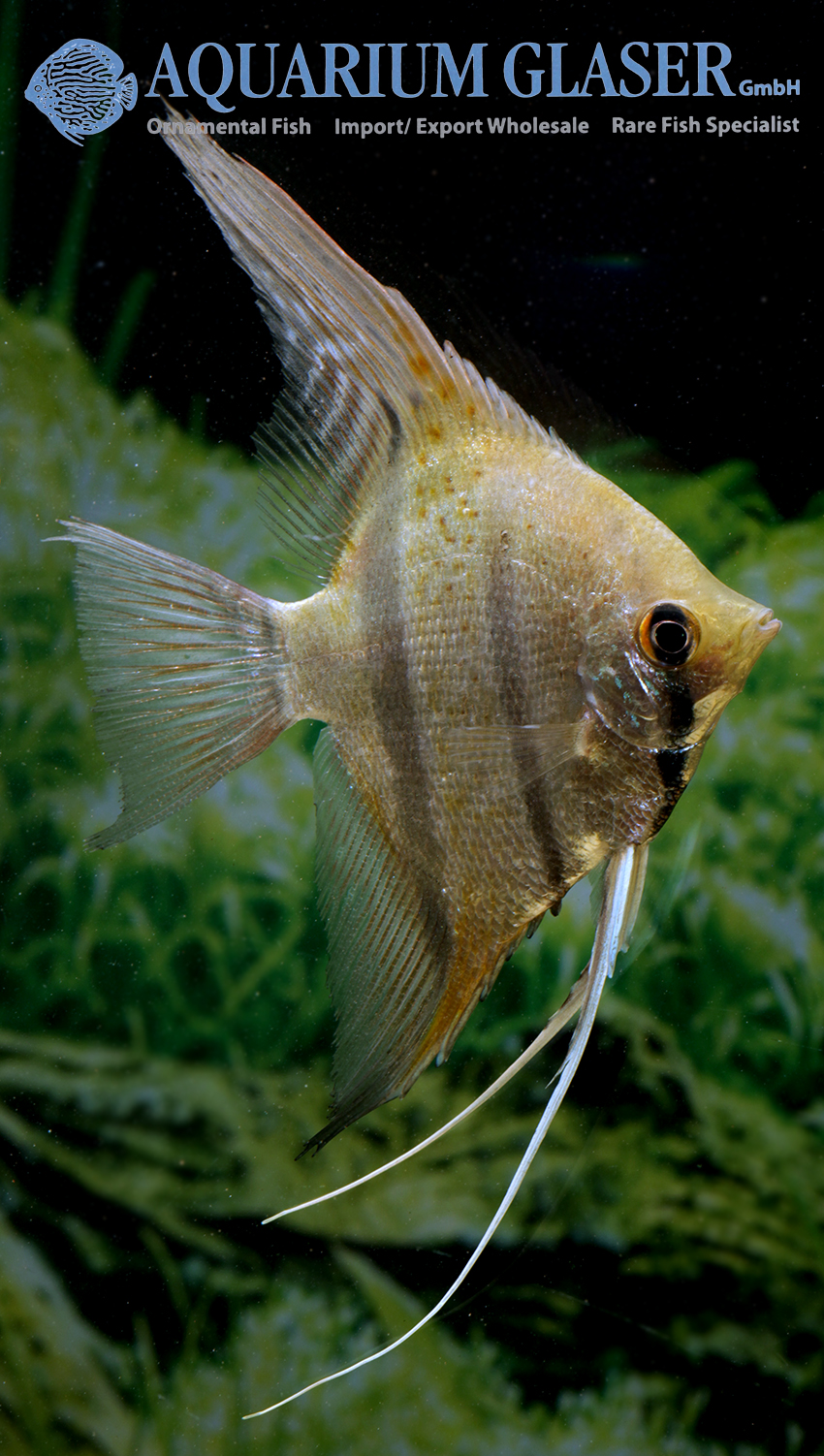
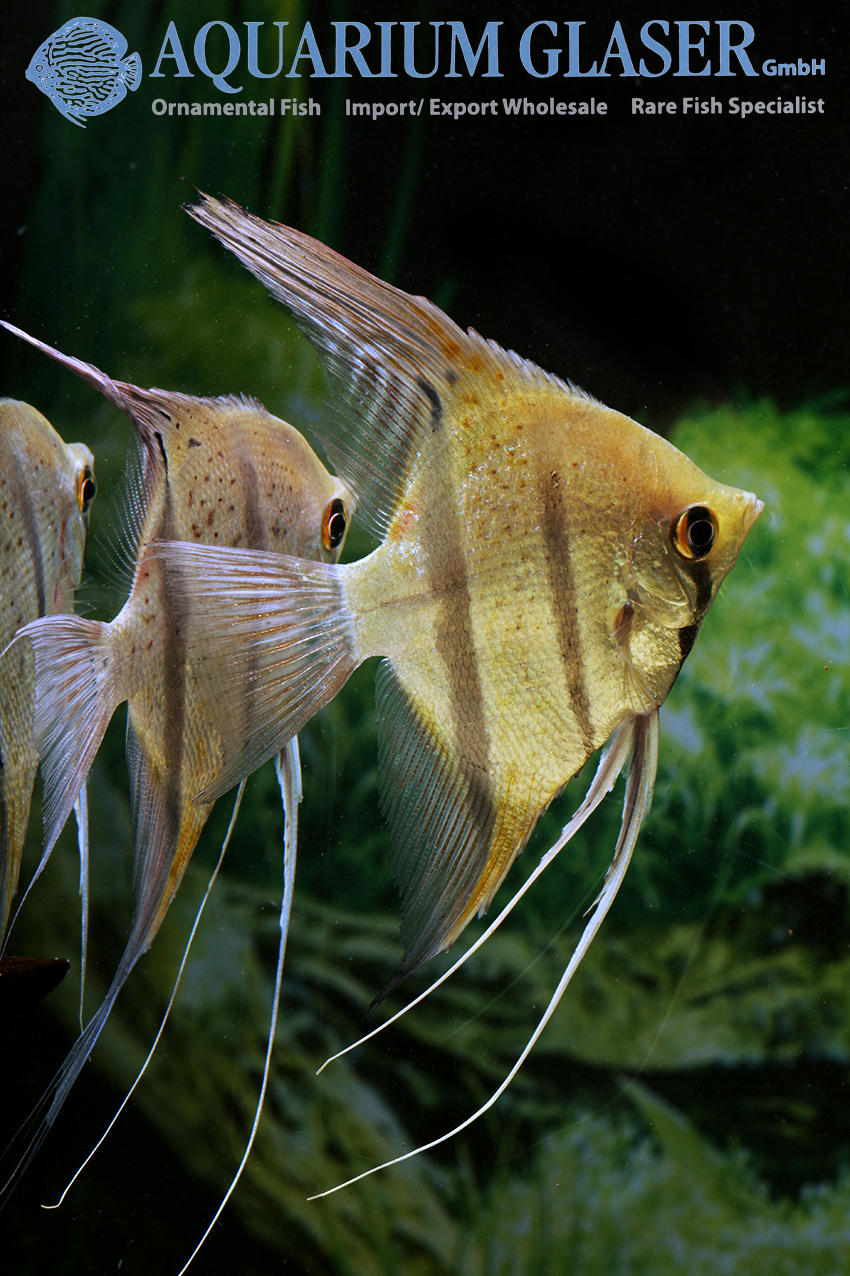
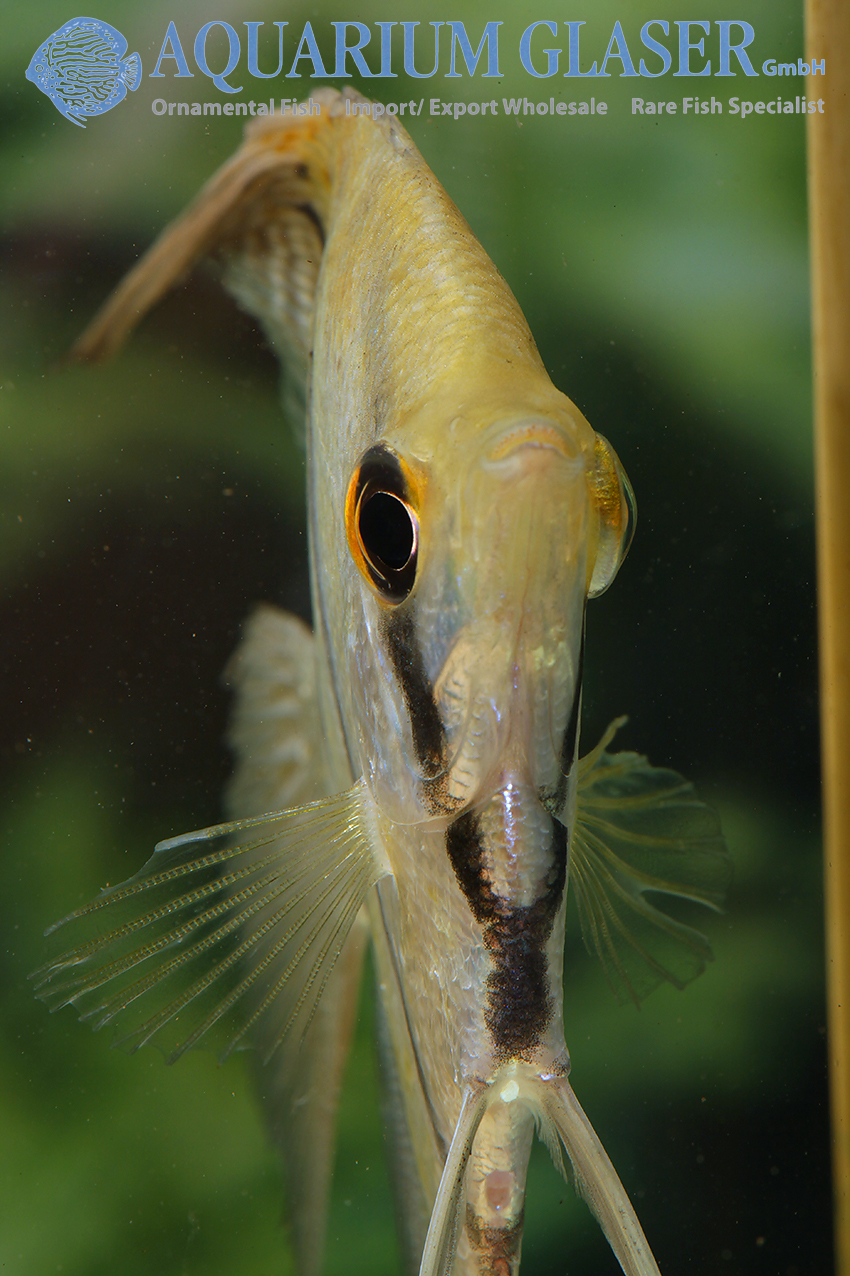
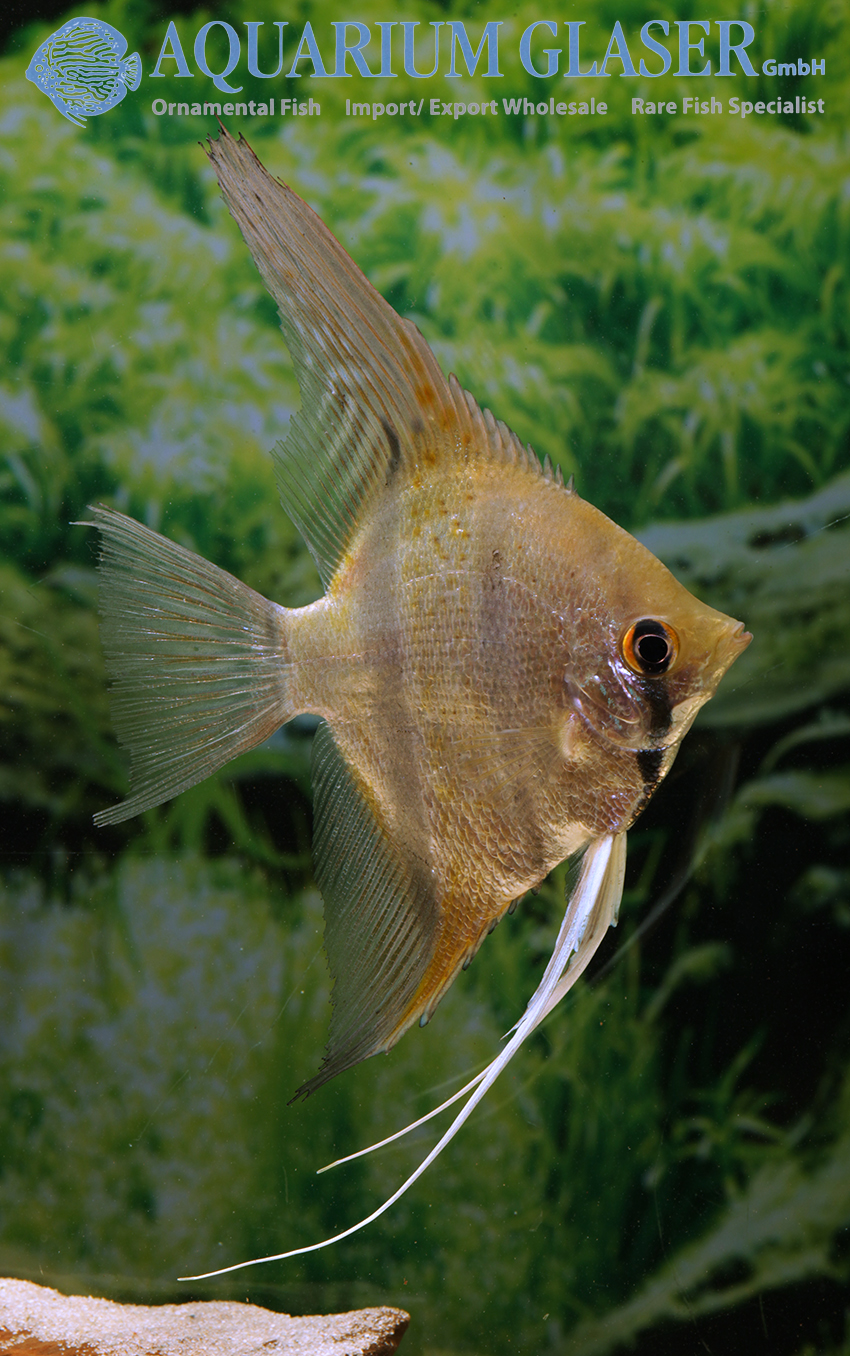
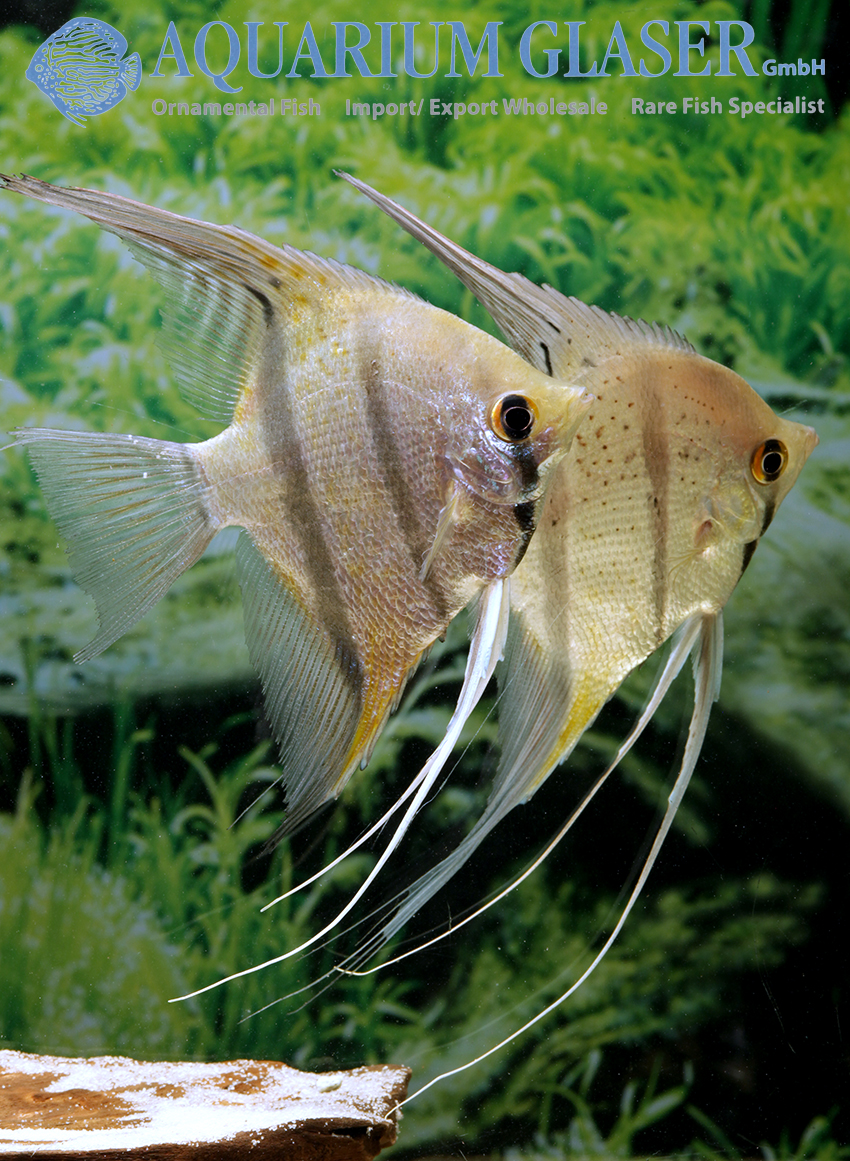
In fact, the “Red Spots Peru” is a scientifically undescribed species. This has nothing to do with the red spots: this species also exists without red spots. Rather it is the black, comma-shaped spot, which extends as extension of the 2nd body bandage into the dorsal fin, which is characteristic for the species (in the order: eye bandage – 1st body bandage – 2nd body bandage – tail root bandage, thus four dark vertical bands, of which the tail root bandage is often only indistinctly visible).
Regardless of the name, the red-spotted angelfish from Peru are magnificent animals, which unfortunately can be imported only very rarely and in small numbers.
For our customers: the animals have code 699307 on our stocklist. Please note that we only supply wholesale. Only available in limited numbers!
Text & photos: Frank Schäfer
Geophagus steindachneri
The redhump eartheater (Geophagus steindachneri) from Colombia has had a regular place in the aquarium since it was first imported to Germany in 1972. There are numerous reasons for this. First of all it is very attractively colored. The males develop a red colored forehead hump, which varies very much in size. Over all: the size. In fact, G. steindachneri can grow up to 25 cm long! But sexual maturity starts already with 6 -7 cm length.

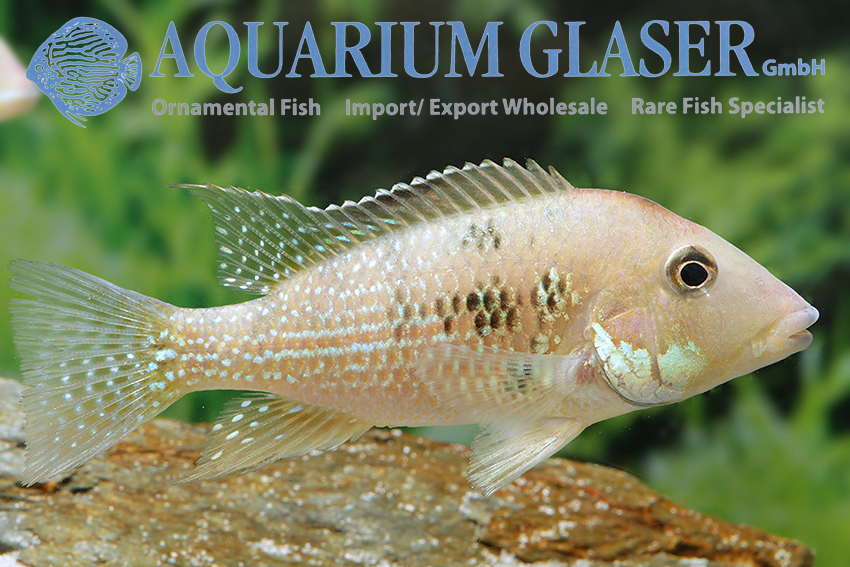
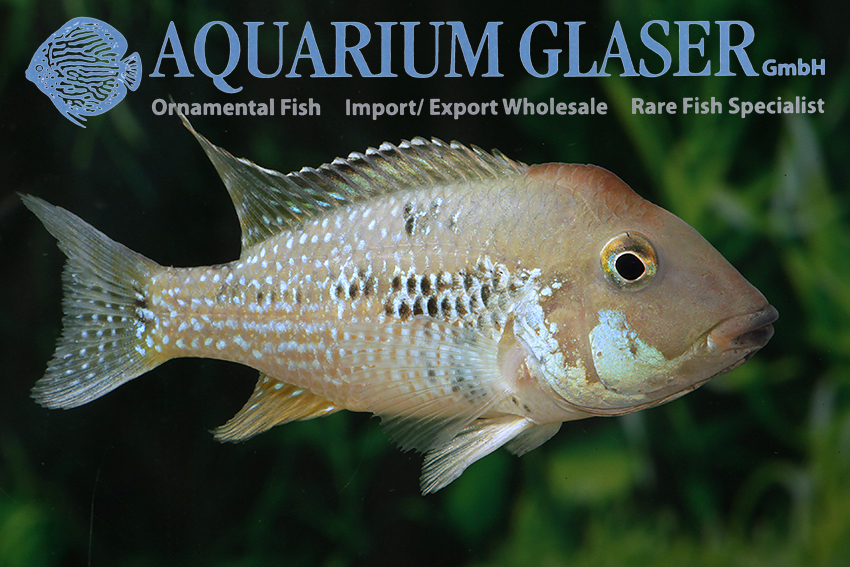
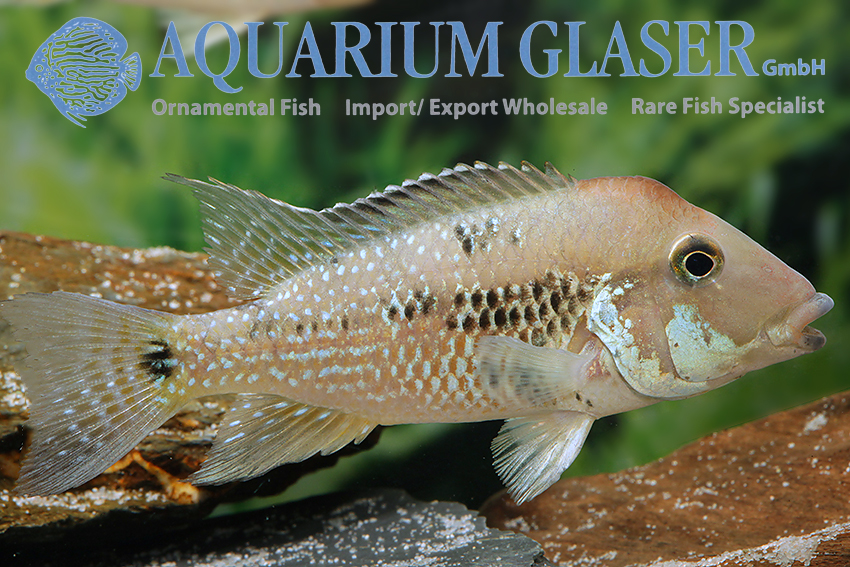
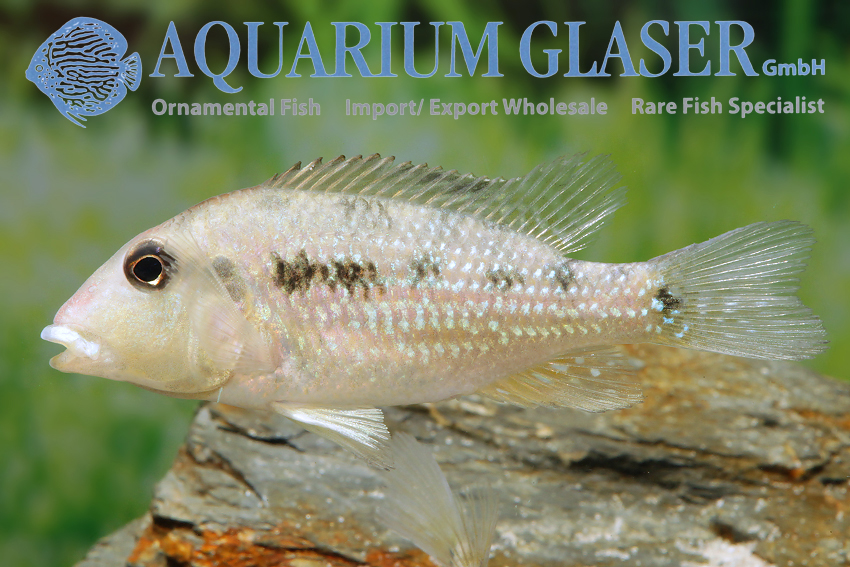
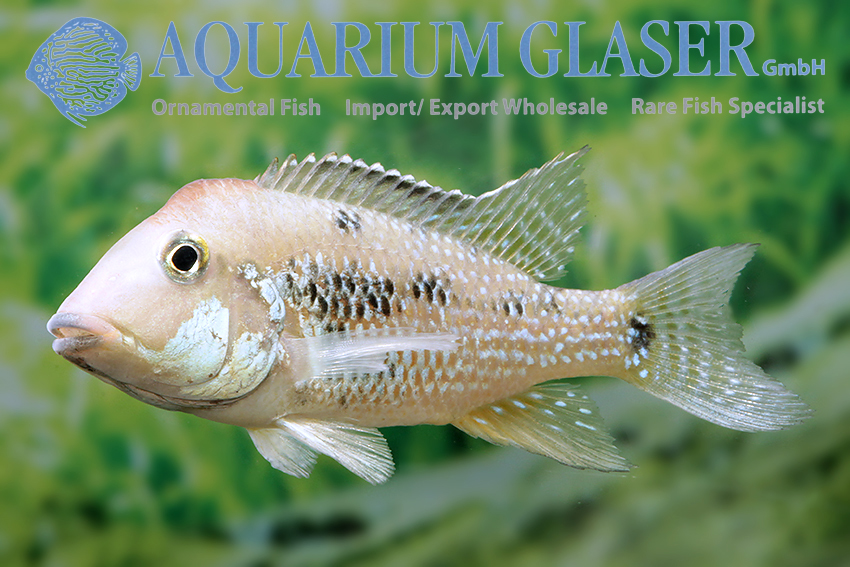
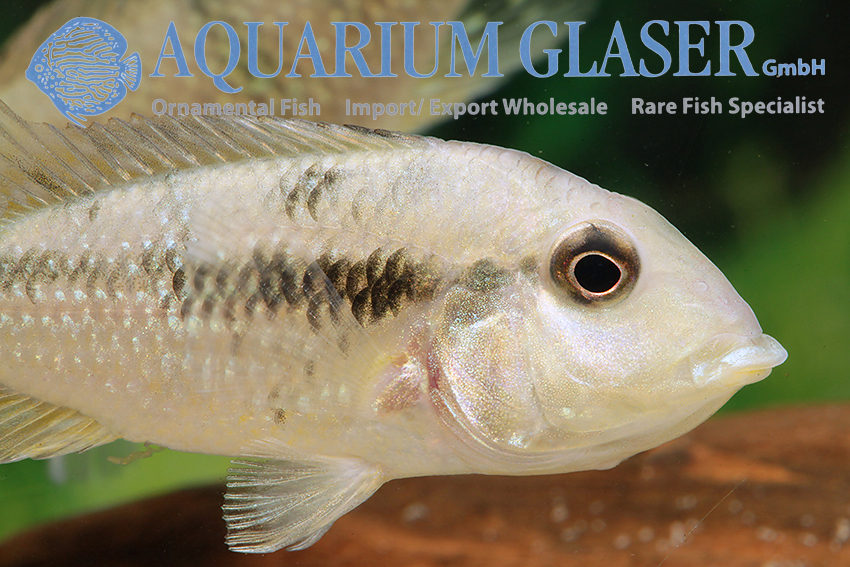
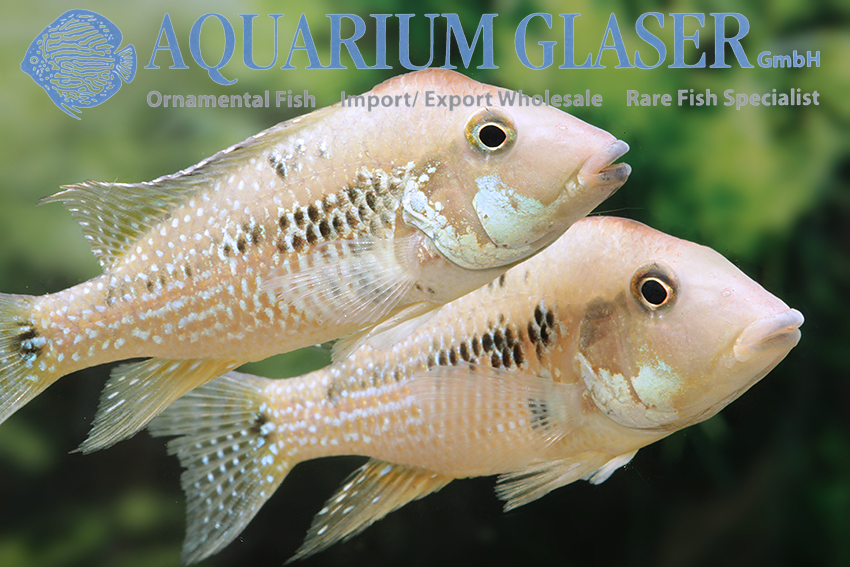
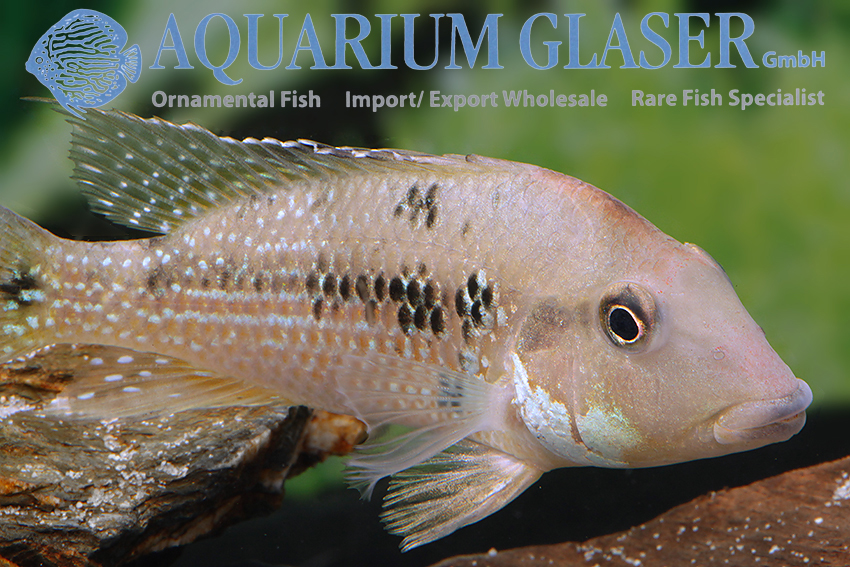
Geophagus steindachneri is considered to be the most specialized mouthbrooder of South America, because the eggs are taken into the maternal mouth immediately after spawning. Instead of egg spots in the anal fin, as found in many African mouthbrooding cichlids, G. steindachneri have orange spots in the corners of the mouth, which achieved the same effect.
We have at the moment nice offsprings of the species in the stock, where the males have as a special feature green-golden areas in the area of the gill covers.
For our customers: the animals have code 678212 on our stocklist. Please note that we supply exclusively to wholesalers.
Text & photos: Frank Schäfer





